When it comes to health reporting about fat people, don't swallow everything you see.
Major news outlets on TV, radio and online lit up Monday with news
about a study claiming there was no such thing as "healthy obesity,"
which is the notion that a person can be obese according to the body
mass index chart, while at the same time be spared adverse health
effects like high blood pressure, insulin resistance and high
cholesterol levels.
For example, NBC News' headline said the study "Disputes Fat But Fit Claim," while NPR went with the headline "Overweight And Healthy: A Combo That Looks Too Good To Be True."
But, in fact, the study showed neither of those things.
The researchers, led by Dr. Caroline K. Kramer, M.D., Ph.D., of Mount
Sinai Hospital's Lunenfeld-Tanenbaum Research Institute in Toronto,
Canada, chose eight high-quality studies that tracked more than 60,000
participants' weights and metabolic health. In each of the eight
studies, participants were followed up after an extended period of time
-- ranging from three to 30 years -- to see if they had either died or
had a cardiovascular "event" like a stroke or heart attack during the
intervening years.
Kramer's team crunched the numbers by dividing the 60,000
participants into two categories: metabolically healthy and
metabolically unhealthy, based on factors like blood pressure,
cholesterol and blood sugar levels. They then created three sub-groups
of each category based on BMI: normal weight, overweight and obese. They
found that obese people who were metabolically healthy had a 24 percent
increased risk of death or cardiovascular disease when compared to the
control group of normal-weight people who were also metabolically
healthy. The meta-analysis was published Dec. 3 in the medical journal Annals of Internal Medicine.
That means NBC's headline -- "New Research Disputes Fat But Fit
Claim" -- is simply wrong because the meta-analysis didn't take physical
fitness into account, so "fat but fit" (where fit means being
physically fit) was never actually tested. NPR's is just inaccurate; in
fact, the meta-analysis showed that overweight, healthy people's risks
were so similar to the control group's risks that the difference was
statistically insignificant. In other words, overweight and healthy is not too good to be true in the context of this study.
So why did the media get this study so wrong?
Glenn Gaesser, Ph.D., an exercise and wellness professor at Arizona
State University, contends that the misinterpretation of this particular
meta-analysis actually started with the researchers themselves. Gaesser
was not involved in the meta-analysis but reviewed its findings, and
noted in an interview with The Huffington Post that the group most at
risk of cardiovascular disease or death was in fact the normal weight,
metabolically unhealthy participants. They were 214 percent (or 3.14
times) more likely to die or have a cardiovascular event, as opposed to
170 percent (2.7 times) for the unhealthy overweight and 165 percent
(2.65 times) for the unhealthy obese.
"Now that may not be statistically significant, but it does suggest
that if you're looking at only people who are [metabolically] unhealthy,
it's better to be fatter than thinner," said Gaesser.
Kramer, the study researcher, addressed this particular issue with
HuffPost, noting that it's already generally accepted that metabolically
unhealthy people have an increased risk of cardiac disease or early
death. What's more important, she stressed, is the "novel" finding that
metabolically healthy obese people are also at increased risk, despite their lack of metabolic disorders.
"We are showing very consistently that the [metabolically healthy
obese] patients are at increased risk," said Kramer. "That's why we are
stressing this finding -- this is something novel in the literature
compared to all the other sub-groups." The 24 percent increase, it
should be noted, was only found in studies that had followed up with
participants 10 years later at least, which to Kramer was a
more accurate way of assessing risk. Obese and healthy, in other words,
was simply the final stop on the road toward an obese and unhealthy
destination.
But Gaesser has a bone to pick with her there: He doesn't think
Kramer's meta-analysis of long-term studies will have lasting
significance in the medical literature on obesity and mortality because
it fails to account for one crucial factor: physical fitness.
"[The study] is junk science," said Gaesser. "It fails to factor in
the very important, well-established contribution of cardiorespiratory
fitness to overall health. The fact that they did not [include fitness]
renders this study almost uninterpretable."
Several studies support Gaesser's claim, including one recently
published meta-analysis by exercise scientist Vaughn Barry of Middle
Tennessee State University. Barry found that physical fitness,
not weight, predicted whether or not a participant had died during a
study's intervening years. He concluded that thin, unfit people had
twice the mortality risk as obese fit people.
Even an editorial in the Annals of Internal Medicine,
which praised Kramer's meta-analysis and was published alongside it,
notes that "decades of work" has shown "cardiorespiratory fitness is a
very strong predictor of total and cardiovascular mortality independent
of BMI" and called for a broader definition of wellness that isn't
limited to BMI.
"Fitness could have changed the entire outcome of this study,"
Gaesser said. "To not consider that in this day and age is
unconscionable."
In the text of Kramer's meta-analysis, she notes that the study's
limitations include not accounting for physical activity or smoking
habits. But for Gaesser, simply listing the lack of fitness data as a
"limitation" isn't good enough.
"This study, statistically speaking, assumes that all fat people, all
thin people and everyone in between are of equal fitness, equal
physical activity levels and have the same diets," Gaesser said. "And
that's just an absurd assumption."
"Ideally, you should look at metabolic factors, weight and fitness,"
conceded Kramer. "But this is a question for future studies."
Psychologist Deb Burgard, Ph.D., who counsels people with eating
disorders, is also troubled by the meta-analysis's reception in
mainstream media. In an email to HuffPost, she bemoaned the fact that
practically all of the news stories about the meta-analysis conclude
with some kind of exhortation for overweight people to shed pounds.
"The study is silent on the health impact of pursuing weight loss,
because it does not compare people who were fat who lost weight to
people who are still fat," she wrote. In fact, she continued, fat people
who repeatedly try to lose weight are more likely to yo-yo diet, or
weight-cycle, than they are to maintain weight loss permanently. And
because weight-cycling has been linked to cardiac disease
and other problems, overweight people who are metabolically healthy
could increase their risks of the very diseases they tried to avoid in
the first place if they lose weight and gain it back again.
The takeaway for fat people? Keep on trucking when it comes to
increasing your physical activity, and don't get discouraged by
headlines that seem to make weight the single determining factor in
living a long, healthy life.
"It's much easier to get a fat person fit than it is to get a fat
person thin," concluded Gaesser. And that's a good thing, because
fitness may be much more rewarding than thinness alone.
Dec 10, 2013
Is Makeup Remover Actually Damaging Your Skin?
Whether your beauty routine involves applying several layers of foundation
or you prefer to keep things simple with just a little mascara and lip
gloss, at the end of the day, you've got to get that makeup off. (If
not, you could end up looking like this.)
The editors here at The Huffington Post swear by countless makeup removers, from Lancôme Bi-Facil to Pond's cold cream to Cetaphil lotion. Once we've discovered a product that gets the job done, it's hard for us to try something new. But could our makeup removers actually be bad for our skin?
Most makeup removers are harmless for your skin, but ingredients matter.
According to board-certified dermatologist Dr. Jeanine B. Downie, any harmful effect will depend on the individual product and sensitivity of the person’s skin.
For example, if you have very sensitive skin or chronically dry eyes, you may notice that you react differently to certain makeup removers. Alcohol-based removers can be especially irritating or drying to the skin. Downie also cautions that unconventional makeup removers, such as baby oil, can block pores significantly and cause breakouts in acne-prone patients.
"Although quick and easy to apply, many makeup removers contain active cleansing ingredients, which may remain on the skin unless washed off," explained Dr. Susan Stuart, founder and medical director of La Jolla Dermatology. "If they remain, the residue from them may expose the skin to excess amounts of various chemicals including emulsifiers and surfactants. These can dry the skin and also irritate it. Some of them also contain various preservatives including formaldehyde, which can be an allergenic, as well as fragrances."
Your skin's sensitivity determines the type of makeup remover you should use.
Using the right makeup remover is vital to keeping skin looking youthful and flawless, according to Dr. David E. Bank, director and founder of The Center for Dermatology, Cosmetic & Laser Surgery.
"Sleeping with makeup on can lead to acne breakouts, accelerate the aging process and make the skin look dull," he said. "There are a plethora of cosmetic products out there that can confuse anyone, so if you are not sure what your skin type is or what product is best for your skin, consult your dermatologist."
If you have rosacea or eczema, use a hypoallergenic fragrance-free makeup remover. Cream or liquid cleansers work well for individuals with sensitive skin. And if your skin is more tolerant, you will be better able to handle makeup remover cleansing cloths.
The most important thing when choosing the perfect makeup remover? Avoid those that contain alcohol, fragrances and preservatives whenever possible, Stuart says (and products from brands like Simple, Ahava and BareMinerals do all these things without costing a fortune).
Handle your eye area with extreme care.
Eye makeup such as mascara is more stubborn to remove, especially when it's waterproof. "For eyes, it's very important to take all of your eye makeup off with a remover targeted for that area. Leftover mascara can lead to eye infections, discoloration and puffy eyes in the morning," said Dr. Bank.
Don't just swipe on your eye makeup remover in haste. Place a cotton ball with remover over your lids, hold it for a minute to dissolve the product, and then wipe away. Do not rub the delicate under-eye area. Once the mascara comes off, face cleanser can be used in the next step.
After using a makeup remover, always wash your face.
If you assumed that you could head straight to bed after wiping off your makeup, you're wrong. "It's essential to remove your makeup with makeup remover before cleansing. This will prevent clogged pores, pimples and breakouts and ensure that you clean your face properly," Bank said.
If you have oily or combination skin, use a cleanser or face wash with salicylic acid or benzoyl peroxide. For dry skin, use a creamy, gentle cleanser or a foaming face wash that will not dry out the skin too much.
Massage gently with your fingertips in circular movements, and use lukewarm water and a facial sponge to deep cleanse. Dr. Bank suggests avoiding scrubs if you have sensitive skin or acne, as they can aggravate the condition.
The editors here at The Huffington Post swear by countless makeup removers, from Lancôme Bi-Facil to Pond's cold cream to Cetaphil lotion. Once we've discovered a product that gets the job done, it's hard for us to try something new. But could our makeup removers actually be bad for our skin?
Most makeup removers are harmless for your skin, but ingredients matter.
According to board-certified dermatologist Dr. Jeanine B. Downie, any harmful effect will depend on the individual product and sensitivity of the person’s skin.
For example, if you have very sensitive skin or chronically dry eyes, you may notice that you react differently to certain makeup removers. Alcohol-based removers can be especially irritating or drying to the skin. Downie also cautions that unconventional makeup removers, such as baby oil, can block pores significantly and cause breakouts in acne-prone patients.
"Although quick and easy to apply, many makeup removers contain active cleansing ingredients, which may remain on the skin unless washed off," explained Dr. Susan Stuart, founder and medical director of La Jolla Dermatology. "If they remain, the residue from them may expose the skin to excess amounts of various chemicals including emulsifiers and surfactants. These can dry the skin and also irritate it. Some of them also contain various preservatives including formaldehyde, which can be an allergenic, as well as fragrances."
Your skin's sensitivity determines the type of makeup remover you should use.
Using the right makeup remover is vital to keeping skin looking youthful and flawless, according to Dr. David E. Bank, director and founder of The Center for Dermatology, Cosmetic & Laser Surgery.
"Sleeping with makeup on can lead to acne breakouts, accelerate the aging process and make the skin look dull," he said. "There are a plethora of cosmetic products out there that can confuse anyone, so if you are not sure what your skin type is or what product is best for your skin, consult your dermatologist."
If you have rosacea or eczema, use a hypoallergenic fragrance-free makeup remover. Cream or liquid cleansers work well for individuals with sensitive skin. And if your skin is more tolerant, you will be better able to handle makeup remover cleansing cloths.
The most important thing when choosing the perfect makeup remover? Avoid those that contain alcohol, fragrances and preservatives whenever possible, Stuart says (and products from brands like Simple, Ahava and BareMinerals do all these things without costing a fortune).
Handle your eye area with extreme care.
Eye makeup such as mascara is more stubborn to remove, especially when it's waterproof. "For eyes, it's very important to take all of your eye makeup off with a remover targeted for that area. Leftover mascara can lead to eye infections, discoloration and puffy eyes in the morning," said Dr. Bank.
Don't just swipe on your eye makeup remover in haste. Place a cotton ball with remover over your lids, hold it for a minute to dissolve the product, and then wipe away. Do not rub the delicate under-eye area. Once the mascara comes off, face cleanser can be used in the next step.
After using a makeup remover, always wash your face.
If you assumed that you could head straight to bed after wiping off your makeup, you're wrong. "It's essential to remove your makeup with makeup remover before cleansing. This will prevent clogged pores, pimples and breakouts and ensure that you clean your face properly," Bank said.
If you have oily or combination skin, use a cleanser or face wash with salicylic acid or benzoyl peroxide. For dry skin, use a creamy, gentle cleanser or a foaming face wash that will not dry out the skin too much.
Massage gently with your fingertips in circular movements, and use lukewarm water and a facial sponge to deep cleanse. Dr. Bank suggests avoiding scrubs if you have sensitive skin or acne, as they can aggravate the condition.
6 Moves For A Stronger Butt

By Jay Cardiello for Shape.com
Busy as you are, you do have time to get your butt in gear -- literally. This ultra-fast workout is so effective because it attacks the three muscles that make up your derrière -- the gluteus maximus, gluteus medius and gluteus minimus --
and works them from 360 degrees. By recruiting more muscle fibers at once, you increase muscle growth and sculpt your rear faster. Plus by strengthening these muscles, you'll create healthier hips since they support that ball and socket joint between your thighbone and pelvis.
How it works: For each exercise, perform as many reps as possible in 60 seconds, focusing on form. Do not rest between exercises.
You'll need: Nothing.
1. Can-Opener
Lay on right side with legs extended. Place right arm directly under armpit with forearm and palm fully resting on the floor. Bend right knee to a 90-degree angle directly under hips with right shin perpendicular to body behind back. Place left hand on hip with left leg fully extended and foot on the floor. Brace core and raise left leg as high as possible. Pause, then lower leg. After 60 seconds, repeat on right side.
2. Butt-Bender
Begin in same position as the can-opener. Brace core and raise left leg until it becomes parallel to the floor. Draw left knee into navel. Reverse direction. After 60 seconds, repeat on right side.
3. Around The World
Begin in same position as the can-opener. Elevate left leg until it becomes parallel to the floor. Make small circles with your foot for 30 seconds. Reverse direction for the remaining 30 seconds. Repeat on right side.
4. Kick-Start
Begin in same position as the can-opener. Raise left leg parallel to the floor. Brace core and swing the leg forward as far as possible while keeping your back straight. Pause, then reverse direction. After 60 seconds, repeat on right side.
5. Burpee Switchback
Stand tall with feet hip-width apart and hands resting at sides. Quickly bend knees and lower hips toward the floor. At lowest point, place palms on the floor in front of you and jump feet back behind you. Immediately jump feet foward again. Jump toward the ceiling, rotating torso 180-degrees to the right to land facing the opposite way. Perform another burpee, this time rotating torso to the left so you land facing forward again. Continue switching direction.
6. Pendulum Swing
Begin in a traditional pushup position with feet hip-width apart and lower back naturally arched so you form a straight line from shoulders to heels. Drive right knee toward navel. Keeping knee bent, engage core and raise leg to the side until shin becomes parallel to the floor. Pause, then reverse direction. After 30 seconds, repeat on right side.
Busy as you are, you do have time to get your butt in gear -- literally. This ultra-fast workout is so effective because it attacks the three muscles that make up your derrière -- the gluteus maximus, gluteus medius and gluteus minimus --
and works them from 360 degrees. By recruiting more muscle fibers at once, you increase muscle growth and sculpt your rear faster. Plus by strengthening these muscles, you'll create healthier hips since they support that ball and socket joint between your thighbone and pelvis.
How it works: For each exercise, perform as many reps as possible in 60 seconds, focusing on form. Do not rest between exercises.
You'll need: Nothing.
1. Can-Opener
Lay on right side with legs extended. Place right arm directly under armpit with forearm and palm fully resting on the floor. Bend right knee to a 90-degree angle directly under hips with right shin perpendicular to body behind back. Place left hand on hip with left leg fully extended and foot on the floor. Brace core and raise left leg as high as possible. Pause, then lower leg. After 60 seconds, repeat on right side.
2. Butt-Bender
Begin in same position as the can-opener. Brace core and raise left leg until it becomes parallel to the floor. Draw left knee into navel. Reverse direction. After 60 seconds, repeat on right side.
3. Around The World
Begin in same position as the can-opener. Elevate left leg until it becomes parallel to the floor. Make small circles with your foot for 30 seconds. Reverse direction for the remaining 30 seconds. Repeat on right side.
4. Kick-Start
Begin in same position as the can-opener. Raise left leg parallel to the floor. Brace core and swing the leg forward as far as possible while keeping your back straight. Pause, then reverse direction. After 60 seconds, repeat on right side.
5. Burpee Switchback
Stand tall with feet hip-width apart and hands resting at sides. Quickly bend knees and lower hips toward the floor. At lowest point, place palms on the floor in front of you and jump feet back behind you. Immediately jump feet foward again. Jump toward the ceiling, rotating torso 180-degrees to the right to land facing the opposite way. Perform another burpee, this time rotating torso to the left so you land facing forward again. Continue switching direction.
6. Pendulum Swing
Begin in a traditional pushup position with feet hip-width apart and lower back naturally arched so you form a straight line from shoulders to heels. Drive right knee toward navel. Keeping knee bent, engage core and raise leg to the side until shin becomes parallel to the floor. Pause, then reverse direction. After 30 seconds, repeat on right side.
The 10-Minute Workout That Really Works
We have a million excuses for cutting a workout off the calendar: too
much work, too far from home, holiday travel, and a marathon Scandal binge before the season cliffhanger.
Well, lo and behold, we’ve decided to stop the insanity and get our daily workouts in, even if it’s just 10 minutes to focus on building up a sweat. We issued a challenge to the insanely talented (and quite handsome) Will Torres, personal trainer and founder of the private training gym WillSpace, to create a simple, safe, and butt-burning workout that you can do anywhere. The only thing you’ll need? A file box with handles that weighs about eight to 10 pounds, some floor space and some sweat-wicking workout gear, because you WILL break a sweat with this workout.
Ready to stop the excuses? Yeah, so are we. Let’s get to work, people, and demonstrate a workout that builds crazy heat, tightens and tones, and torches some serious calories, all in just under 10 minutes flat. The only equipment you’ll need is a file box or a square container with handles that weighs about eight to 10 pounds.
Tips For Working Out:
Hydrate: “You always want to be well hydrated before working out. If you wait until you’re thirsty, it’s already too late: you’re dehydrated. Have a bottle of water with you while you’re working out, too.”
Eat Beforehand: “Generally, you want to eat up to two hours before you work out. It’s kind of a trick question what to eat before you sweat: there are so many variations. You can work out with just a cup of coffee if you want to do this in the morning, or just have a light snack sometime before you work out."
Warming Up: You’ll want to warm up before you move, so Will suggests 60 seconds of Box Taps (the first move demonstrated) for both heating up your muscles and for your cool down.
Please go through the program as quickly as YOU can, no rest between the moves. The whole workout should take you nine-and-a-half minutes to complete, and you can run through the workout two to three times without stopping (or with small breaks, who are we kidding?) depending on your level of fitness.
Well, lo and behold, we’ve decided to stop the insanity and get our daily workouts in, even if it’s just 10 minutes to focus on building up a sweat. We issued a challenge to the insanely talented (and quite handsome) Will Torres, personal trainer and founder of the private training gym WillSpace, to create a simple, safe, and butt-burning workout that you can do anywhere. The only thing you’ll need? A file box with handles that weighs about eight to 10 pounds, some floor space and some sweat-wicking workout gear, because you WILL break a sweat with this workout.
Ready to stop the excuses? Yeah, so are we. Let’s get to work, people, and demonstrate a workout that builds crazy heat, tightens and tones, and torches some serious calories, all in just under 10 minutes flat. The only equipment you’ll need is a file box or a square container with handles that weighs about eight to 10 pounds.
Tips For Working Out:
Hydrate: “You always want to be well hydrated before working out. If you wait until you’re thirsty, it’s already too late: you’re dehydrated. Have a bottle of water with you while you’re working out, too.”
Eat Beforehand: “Generally, you want to eat up to two hours before you work out. It’s kind of a trick question what to eat before you sweat: there are so many variations. You can work out with just a cup of coffee if you want to do this in the morning, or just have a light snack sometime before you work out."
Warming Up: You’ll want to warm up before you move, so Will suggests 60 seconds of Box Taps (the first move demonstrated) for both heating up your muscles and for your cool down.
Please go through the program as quickly as YOU can, no rest between the moves. The whole workout should take you nine-and-a-half minutes to complete, and you can run through the workout two to three times without stopping (or with small breaks, who are we kidding?) depending on your level of fitness.
The Frightening Impact Of Chronic Migraines
Nancy Girvin first experienced a migraine at the age of 12. JP Summers used to have migraines so painful she would black out.
The often-misunderstood condition is "incredibly disabling," Dr. Joshua Cohen, M.D., a headache specialist and neurologist in New York City, said in a recent HuffPost Live segment. And while there isn't a cure for patients like Girvin and Summers who live with chronic migraines, there is usually something doctors can do to at least make the pain bearable, he said.
However, sometimes little works. Becky Dwyer joined the segment to tell the story of her late daughter, who couldn't find anyone to help with her chronic migraines and had lost her job and friends since she had to spend most of her time in her dark bedroom. She committed suicide in June at the age of 22.
Some doctors don't even believe the severity of a patient's discomfort, said Girvin, so it's important to find someone who is at least sympathetic "because many doctors -- even neurologists -- don't know what's going to work, and every patient is different."
Hear more about this debilitating condition in the clip above, then watch the entire segment here.
The often-misunderstood condition is "incredibly disabling," Dr. Joshua Cohen, M.D., a headache specialist and neurologist in New York City, said in a recent HuffPost Live segment. And while there isn't a cure for patients like Girvin and Summers who live with chronic migraines, there is usually something doctors can do to at least make the pain bearable, he said.
However, sometimes little works. Becky Dwyer joined the segment to tell the story of her late daughter, who couldn't find anyone to help with her chronic migraines and had lost her job and friends since she had to spend most of her time in her dark bedroom. She committed suicide in June at the age of 22.
Some doctors don't even believe the severity of a patient's discomfort, said Girvin, so it's important to find someone who is at least sympathetic "because many doctors -- even neurologists -- don't know what's going to work, and every patient is different."
Hear more about this debilitating condition in the clip above, then watch the entire segment here.
15 Things You're Doing Wrong Every Day
You probably feel like your daily routines are just fine, so it might
surprise you to find out how much you're actually doing wrong.
Just because we've been doing something one way for as long as we can remember doesn't mean it's necessarily the best way. For just about every run-of-the-mill activity we do, there's a life-hack out there proclaiming you can somehow do it better. And if you had the chance to be the best of your friends at breathing or even sitting, why not at least give it a try? Go for the gold in washing your hands or taking out the garbage and you'll be well on your way to a better you.
Know these 15 things you're doing wrong and then maybe you can finally start doing things RIGHT.

1. Breathing

You breathe about 17,000 times a day, but your technique might be flawed. Slower, deeper breathing that comes from the lower diaphragm (or even better the surrounding area of the diaphragm) can help you relieve stress, lower your blood pressure and improve athletic performance by increasing stamina and reducing fatigue. Most of us are chest breathers, but developing a more focused approach can help you feel better day to day, especially if you're also exercising.
2. Showering
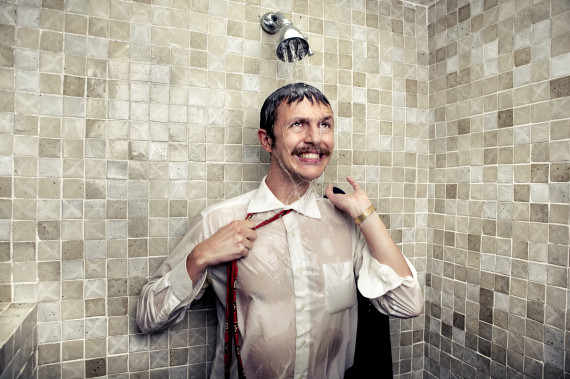
If you're shampooing more than a few times a week, you may be stripping away important oils in your hair -- called sebum -- and actually making your hair greasier: As sebum is stripped away, it causes oil glands on your scalp to compensate by overproducing more sebum, reported NPR, giving your hair an oily consistency. You also may be taking way too long in the shower. Long hot showers dry out your skin, use quite a bit of water (around 17 gallons each time), and can remove too much "good bacteria."
3. Working Out
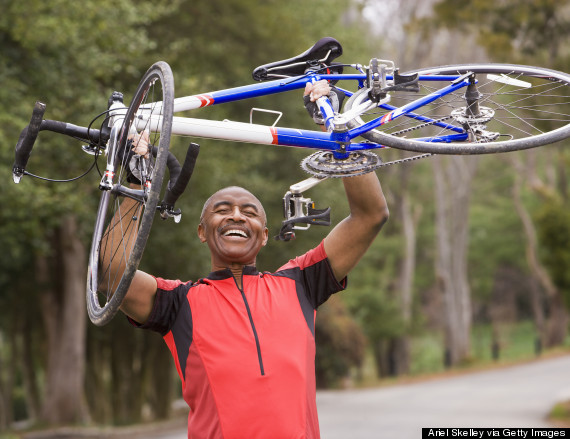
Stretching before exercising can actually be counterintuitive as it temporarily weakens muscles and might not even reduce soreness in the days following exercise.
As for your actual workouts, spending time lifting lighter weights with more repetitions actually doesn't have greater slimming benefits than lifting heavier weights, and a lot of exercise doesn't have any slimming benefits at all. You also might want to rethink scheduling workouts every day.
4. Pronunciation

You're probably mispronouncing a ton of words, and with the immense popularity of "pronunciation" posts (see here, here, here and here) you might feel a little bit insecure about it. The "correct" pronunciation of some words might be eternally debatable, like "gif" (the White House says it's a hard "g," while their creator and "Jeopardy!" say soft, like "jif"). There are also words like "sherbet," which really doesn't have that phantom second "r," or "broo-skett-uh" (bruschetta). We all need to get on the same page with those.
5. Eating
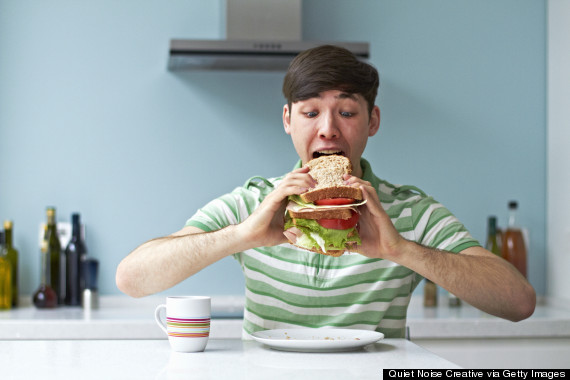
Making sure to eat breakfast probably doesn't help you lose weight. You also might be eating too much meat (especially if it's red), and you probably don't need to be told this, but fast food is bad for you.
Also, no matter what you eat, eating it too fast may disrupt your body's natural chemical signals, causing you to consume more than you should, which could lead to a greater risk of obesity.
6. The Opposite of Eating

You should really be squatting instead of sitting. If the idea of simply hovering doesn't sound all too appealing, there are quite a few different ways to help you get in that squat position. Just make sure you're not straining.
Oh, and you've also probably been placing toilet seat covers on backwards. On top of all this, after you're done, you really need to be closing that lid, as molecules from whatever is in the bowl will fly into the air, making your toothbrush disgusting.
7. Washing Your Hands

Only 5 percent of Americans wash their hands correctly, so there's a very good chance you're doing this one wrong. Although the base definition of washing the right way means "rubbing vigorously with soap and water for at least 20 seconds," there are even more things you're probably doing wrong. Antibacterial soaps have been criticized over their use of the chemical "triclosan," which may cause antibiotic resistance and potentially even hormone alteration. On top of this, there may actually be no advantage to using antibacterial soaps when it comes to reducing your chances of getting sick.
Finally, you might be drying your hands wrong, as paper towels require a whole 15 seconds of use while hand dryers require 45 seconds. Paper towels have been found to be more effective in general.
8. Laundry
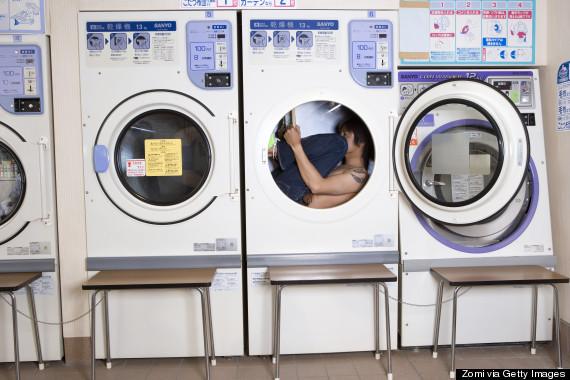
Your washing machine could be filled with E. coli and fecal matter, due to the residue your undergarments shed when rinsed (unless you go to Yale, where the poop particles could just be from students who have used the machines as toilets). You also may be failing to separate your clothes in enough categories or making the mistake of under/over filling the machine. And you're doing things especially wrong if you've moved out of the house, but still make your mom do your laundry.
9. Taking Out the Garbage
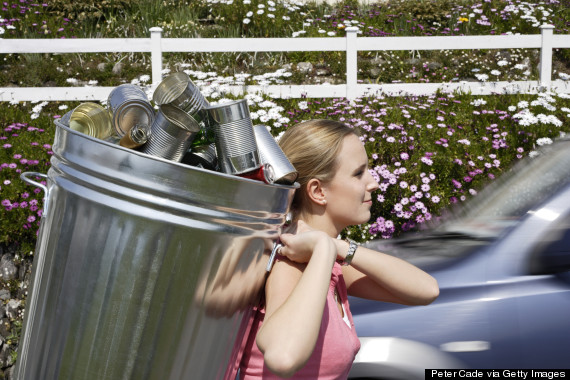
We have a huge "recycling bias," which makes us far less likely to recycle dented cans or ripped paper just because it isn't in pristine condition. Obviously, much of these items could still be recycled, as about 50 percent of our garbage is made up of recyclable materials.
When it comes to taking out actual trash, you could also be using kitty litter to destroy your trash can's street odor, or drilling small holes in the side of your garbage can to make large trashbag removal easier. And if you don't live on the ground floor, maybe you should consider investing in a fishing line.
10. Sleeping
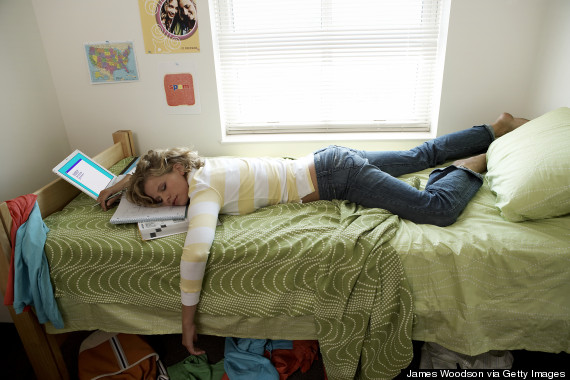
About 70 million Americans aren't sleeping correctly and are at risk of significantly altering their "memory, learning, creativity, productivity and emotional stability." On top of this, there really is a sweet spot for how much sleep you should get. Anything outside of these regular sleep hours could have long-term health risks that have been associated with shortened lifespans. But it isn't just sleep behavior that can help you get this right. Tips for improving your sleep include exercising, turning off your phone, or simply tricking your brain into thinking you're dead tired.
11. Being Productive
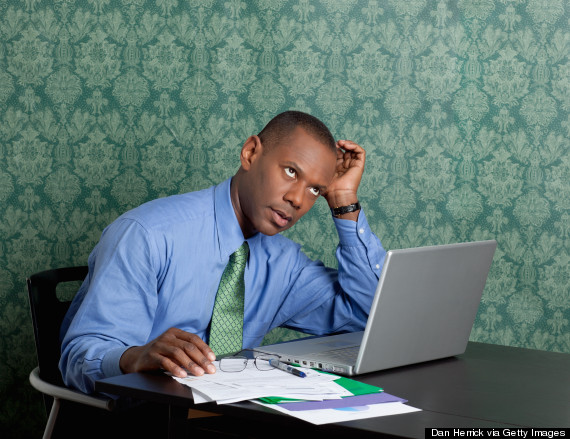
It's actually impossible to multitask and those who come close are simply switching between tasks very quickly, which usually decreases focus. If you're someone who likes to power through tasks, you should know that your willpower is actually a finite resource and that taking breaks could significantly boost your mental capacities to do work. Here's another reminder to make sure you're making time for sleep, because on top of helping ideas solidify in your head, it can also -- surprise -- make you more productive.
12. Shaving

First off, shaving doesn't cause hair to come back thicker -- that is a myth. On a shave-to-shave basis, you should really be making sure to prepare your skin with the right creams and heating techniques to make sure you aren't totally wrecking your face, legs, armpits, etc. Also make sure to shave at night if you can, as the process leaves your skin ultra sensitive.
13. Recovering from a Hangover
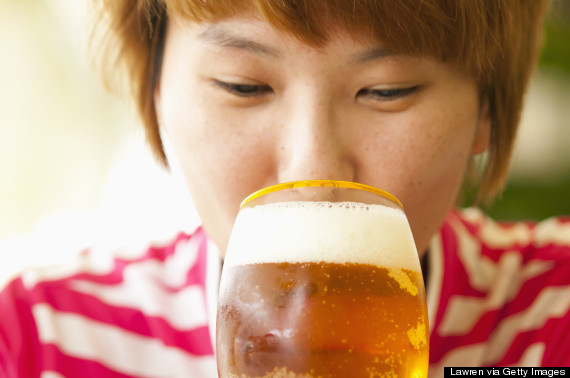
Although recent studies have shown that Sprite might be the best hangover cure and Pedialyte has seen a recent rise in popularity, most doctors still agree that except for intense hangovers, which require more serious rehydration, waiting may be the only true cure, as the alcohol ultimately needs to be processed in your system regardless.
14. Brushing Your Teeth
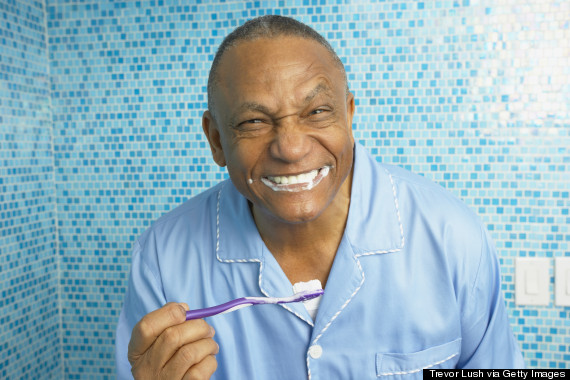
First off, you should never brush your teeth directly after having an acidic meal or drink, because that can push the acid deeper into your enamel. Instead, wait 30 minutes or simply rinse your mouth with water. Some basic tips: Brush for two minutes each time, using a soft brush and not rubbing your teeth and gums too hard.
15. Sitting

Sitting for more than just a few hours a day can shorten your life expectancy and lead to a much higher risk of contracting diseases like diabetes or cardiovascular problems. Even if you work out regularly, just sitting around at the office all day can constitute a sedentary enough of a lifestyle to invite health risks. Although stand-up desks might be a good way to go, if you want to sit better there are simple posture and ergonomic tricks. You could make sure to fidget around (ideally not in a totally weird way). Or, if you have $1,000 lying around, you could buy a super high-tech chair.
You were wondering how much you've been doing wrong.

And apparently it's just about everything.

Just because we've been doing something one way for as long as we can remember doesn't mean it's necessarily the best way. For just about every run-of-the-mill activity we do, there's a life-hack out there proclaiming you can somehow do it better. And if you had the chance to be the best of your friends at breathing or even sitting, why not at least give it a try? Go for the gold in washing your hands or taking out the garbage and you'll be well on your way to a better you.
Know these 15 things you're doing wrong and then maybe you can finally start doing things RIGHT.

1. Breathing

You breathe about 17,000 times a day, but your technique might be flawed. Slower, deeper breathing that comes from the lower diaphragm (or even better the surrounding area of the diaphragm) can help you relieve stress, lower your blood pressure and improve athletic performance by increasing stamina and reducing fatigue. Most of us are chest breathers, but developing a more focused approach can help you feel better day to day, especially if you're also exercising.
2. Showering

If you're shampooing more than a few times a week, you may be stripping away important oils in your hair -- called sebum -- and actually making your hair greasier: As sebum is stripped away, it causes oil glands on your scalp to compensate by overproducing more sebum, reported NPR, giving your hair an oily consistency. You also may be taking way too long in the shower. Long hot showers dry out your skin, use quite a bit of water (around 17 gallons each time), and can remove too much "good bacteria."
3. Working Out

Stretching before exercising can actually be counterintuitive as it temporarily weakens muscles and might not even reduce soreness in the days following exercise.
As for your actual workouts, spending time lifting lighter weights with more repetitions actually doesn't have greater slimming benefits than lifting heavier weights, and a lot of exercise doesn't have any slimming benefits at all. You also might want to rethink scheduling workouts every day.
4. Pronunciation

You're probably mispronouncing a ton of words, and with the immense popularity of "pronunciation" posts (see here, here, here and here) you might feel a little bit insecure about it. The "correct" pronunciation of some words might be eternally debatable, like "gif" (the White House says it's a hard "g," while their creator and "Jeopardy!" say soft, like "jif"). There are also words like "sherbet," which really doesn't have that phantom second "r," or "broo-skett-uh" (bruschetta). We all need to get on the same page with those.
5. Eating

Making sure to eat breakfast probably doesn't help you lose weight. You also might be eating too much meat (especially if it's red), and you probably don't need to be told this, but fast food is bad for you.
Also, no matter what you eat, eating it too fast may disrupt your body's natural chemical signals, causing you to consume more than you should, which could lead to a greater risk of obesity.
6. The Opposite of Eating

You should really be squatting instead of sitting. If the idea of simply hovering doesn't sound all too appealing, there are quite a few different ways to help you get in that squat position. Just make sure you're not straining.
Oh, and you've also probably been placing toilet seat covers on backwards. On top of all this, after you're done, you really need to be closing that lid, as molecules from whatever is in the bowl will fly into the air, making your toothbrush disgusting.
7. Washing Your Hands

Only 5 percent of Americans wash their hands correctly, so there's a very good chance you're doing this one wrong. Although the base definition of washing the right way means "rubbing vigorously with soap and water for at least 20 seconds," there are even more things you're probably doing wrong. Antibacterial soaps have been criticized over their use of the chemical "triclosan," which may cause antibiotic resistance and potentially even hormone alteration. On top of this, there may actually be no advantage to using antibacterial soaps when it comes to reducing your chances of getting sick.
Finally, you might be drying your hands wrong, as paper towels require a whole 15 seconds of use while hand dryers require 45 seconds. Paper towels have been found to be more effective in general.
8. Laundry

Your washing machine could be filled with E. coli and fecal matter, due to the residue your undergarments shed when rinsed (unless you go to Yale, where the poop particles could just be from students who have used the machines as toilets). You also may be failing to separate your clothes in enough categories or making the mistake of under/over filling the machine. And you're doing things especially wrong if you've moved out of the house, but still make your mom do your laundry.
9. Taking Out the Garbage

We have a huge "recycling bias," which makes us far less likely to recycle dented cans or ripped paper just because it isn't in pristine condition. Obviously, much of these items could still be recycled, as about 50 percent of our garbage is made up of recyclable materials.
When it comes to taking out actual trash, you could also be using kitty litter to destroy your trash can's street odor, or drilling small holes in the side of your garbage can to make large trashbag removal easier. And if you don't live on the ground floor, maybe you should consider investing in a fishing line.
10. Sleeping

About 70 million Americans aren't sleeping correctly and are at risk of significantly altering their "memory, learning, creativity, productivity and emotional stability." On top of this, there really is a sweet spot for how much sleep you should get. Anything outside of these regular sleep hours could have long-term health risks that have been associated with shortened lifespans. But it isn't just sleep behavior that can help you get this right. Tips for improving your sleep include exercising, turning off your phone, or simply tricking your brain into thinking you're dead tired.
11. Being Productive

It's actually impossible to multitask and those who come close are simply switching between tasks very quickly, which usually decreases focus. If you're someone who likes to power through tasks, you should know that your willpower is actually a finite resource and that taking breaks could significantly boost your mental capacities to do work. Here's another reminder to make sure you're making time for sleep, because on top of helping ideas solidify in your head, it can also -- surprise -- make you more productive.
12. Shaving

First off, shaving doesn't cause hair to come back thicker -- that is a myth. On a shave-to-shave basis, you should really be making sure to prepare your skin with the right creams and heating techniques to make sure you aren't totally wrecking your face, legs, armpits, etc. Also make sure to shave at night if you can, as the process leaves your skin ultra sensitive.
13. Recovering from a Hangover

Although recent studies have shown that Sprite might be the best hangover cure and Pedialyte has seen a recent rise in popularity, most doctors still agree that except for intense hangovers, which require more serious rehydration, waiting may be the only true cure, as the alcohol ultimately needs to be processed in your system regardless.
14. Brushing Your Teeth

First off, you should never brush your teeth directly after having an acidic meal or drink, because that can push the acid deeper into your enamel. Instead, wait 30 minutes or simply rinse your mouth with water. Some basic tips: Brush for two minutes each time, using a soft brush and not rubbing your teeth and gums too hard.
15. Sitting

Sitting for more than just a few hours a day can shorten your life expectancy and lead to a much higher risk of contracting diseases like diabetes or cardiovascular problems. Even if you work out regularly, just sitting around at the office all day can constitute a sedentary enough of a lifestyle to invite health risks. Although stand-up desks might be a good way to go, if you want to sit better there are simple posture and ergonomic tricks. You could make sure to fidget around (ideally not in a totally weird way). Or, if you have $1,000 lying around, you could buy a super high-tech chair.
You were wondering how much you've been doing wrong.

And apparently it's just about everything.

7 Ways to Reset Your Health
My health has had a rough couple of weeks. It started with an
overwhelming business trip to the West Coast and ended with the
Thanksgiving holiday. There was good travel and bad travel. There was
good stress (fun, family, cool experiences) and bad stress (airports,
drama, family meltdowns, a flu virus, crowds). As a yoga teacher and
wellness coach, you would expect that I would breeze through these
challenges on unicorn wings and well-set intentions. Well, here's the
truth -- that wasn't what happened.
Long story short, I fell off the healthy living wagon. For almost 10 days I practiced zero minutes of yoga. I ate food that has no right being called food. I drank way too much coffee and a wee bit too much alcohol. My sleep was intermittent and interrupted. When my head wasn't buried in my computer it was spinning with plans, to-dos, ideas and anxiety. I had sugar dunked in sugar for breakfast. While I did refrain from hookers and cocaine, it was still a dark, anti-wellness time for me.
The good news is I know that it's not the falling down that hurts us, it's not getting back up. So, the happy part of this missive is that I know how to get right back on track. I'm sharing these tips with you in the hopes that it will help you when you fall off your healthy living plan. Here are seven tips to getting back to your super sexy healthy self.
1. Clean, green and mean up your food choices.
This for me, means being very strict for a few weeks. To get back on track, I live on the no sugar, no grain, no dairy, no alcohol, no processed junk, no excuses, vegetables and lean protein love diet. The good people at Whole9Life.com have a great 30-day plan that has very literally changed my life. Taking a strict approach to my diet for a few weeks makes me feel in control and happy. I double up on greens, bake a lot of chicken and fish, and prep a lot of fresh vegetables. I also get to "enjoy" the major detox temper tantrum that my body will have over the lack of sugar and processed foods. I curse my bad decisions, but know that life will be so much better after some clean food, a few strategic naps, herbal tea and multiple green smoothies. It usually takes me three days of eating clean to feel like a whole new person and three weeks for eating this way to seem effortless again.
2. Shake, rattle and roll your body.
I am not talking about the "drag your hiney to the gym and just get it over with" kind of exercise. After a major derailment, I recommend super fun-tastic, happy, shake-your-booty kind of movement. I dance around my house. I blast music and do some vacuuming and karaoke (multitasking rocks!). I play football with my son. I run around outside and get some cold Midwestern air in my lungs. It's amazing how invigorating fresh air and sweat can be! Take away the "should" about movement and just make it about having fun.
3. Three words. Yoga. Yoga. Yoga.
I can't call myself a yoga teacher and not make this recommendation, however, I suggest you pick your class carefully. Sometimes you will need a rocking power vinyasa class to shake yourself out of your bloat. Sometimes you will need a grounding slow flow or yin class. After I'm particularly hard on my body, I want to sweat. A lot. It makes me feel like I am getting rid of what doesn't serve me. If you are new to yoga, find a class that looks fun and try it out. Be brave. Spend an hour with yourself, connecting to what feels real.
4. Smell some candles and find the silence.
Nothing makes me feel more on track than a warm room, my animals, a yummy smelling candle and blissful quiet. I may sit in meditation. I may just sit and pet the fur kids. This time to connect is critical to feeling better. Get out of your head and allow yourself just to be you.
5. Love up your closest friends and family.
When you are off track, it helps to fill your social time with people who love you, support you and want the best for you. Eliminate all toxic energy. I like to combine my other activities with this one. For example, my best friend and I will go for a walk or to a yoga class. My husband and I might dance around our living room. Surround yourself with love.
6. Unplug and sleep.
After going nuts with stress and food, I turn TV off, turn off my computer at 7 p.m. and try to use my rest and relaxation time carefully. Nothing critical is going to happen on Keeping Up with the Kardashians, and you can catch up on Facebook when you're feeling better. Get away from energy drains and nurture your own energy. Just by checking out of your digital life and checking in with your mind and body, you will find peace.
7. Practice gratitude.
I can't even begin to tell you how helpful gratitude is for overcoming challenges. Yes, you don't feel the best, but how great is it that you have the ability to make choices? How amazing that you have access to resources to get back on track? How did you get so lucky to have such a great support system? We all can find something in our lives to be grateful for and this feeling can lift us out of self-destruction, self-pity and crankiness. Gratitude only brings more good things into your life.
There is nothing explosive or new about these ideas, but by using them I always find my way back to center and feel healthy, happy and super sexy again. It's important to remember that perfection does not exist, and when we stop beating ourselves up for mistakes or derailments we can get back to feeling awesome, energized and exuberant lickety-split.
Long story short, I fell off the healthy living wagon. For almost 10 days I practiced zero minutes of yoga. I ate food that has no right being called food. I drank way too much coffee and a wee bit too much alcohol. My sleep was intermittent and interrupted. When my head wasn't buried in my computer it was spinning with plans, to-dos, ideas and anxiety. I had sugar dunked in sugar for breakfast. While I did refrain from hookers and cocaine, it was still a dark, anti-wellness time for me.
The good news is I know that it's not the falling down that hurts us, it's not getting back up. So, the happy part of this missive is that I know how to get right back on track. I'm sharing these tips with you in the hopes that it will help you when you fall off your healthy living plan. Here are seven tips to getting back to your super sexy healthy self.
1. Clean, green and mean up your food choices.
This for me, means being very strict for a few weeks. To get back on track, I live on the no sugar, no grain, no dairy, no alcohol, no processed junk, no excuses, vegetables and lean protein love diet. The good people at Whole9Life.com have a great 30-day plan that has very literally changed my life. Taking a strict approach to my diet for a few weeks makes me feel in control and happy. I double up on greens, bake a lot of chicken and fish, and prep a lot of fresh vegetables. I also get to "enjoy" the major detox temper tantrum that my body will have over the lack of sugar and processed foods. I curse my bad decisions, but know that life will be so much better after some clean food, a few strategic naps, herbal tea and multiple green smoothies. It usually takes me three days of eating clean to feel like a whole new person and three weeks for eating this way to seem effortless again.
2. Shake, rattle and roll your body.
I am not talking about the "drag your hiney to the gym and just get it over with" kind of exercise. After a major derailment, I recommend super fun-tastic, happy, shake-your-booty kind of movement. I dance around my house. I blast music and do some vacuuming and karaoke (multitasking rocks!). I play football with my son. I run around outside and get some cold Midwestern air in my lungs. It's amazing how invigorating fresh air and sweat can be! Take away the "should" about movement and just make it about having fun.
3. Three words. Yoga. Yoga. Yoga.
I can't call myself a yoga teacher and not make this recommendation, however, I suggest you pick your class carefully. Sometimes you will need a rocking power vinyasa class to shake yourself out of your bloat. Sometimes you will need a grounding slow flow or yin class. After I'm particularly hard on my body, I want to sweat. A lot. It makes me feel like I am getting rid of what doesn't serve me. If you are new to yoga, find a class that looks fun and try it out. Be brave. Spend an hour with yourself, connecting to what feels real.
4. Smell some candles and find the silence.
Nothing makes me feel more on track than a warm room, my animals, a yummy smelling candle and blissful quiet. I may sit in meditation. I may just sit and pet the fur kids. This time to connect is critical to feeling better. Get out of your head and allow yourself just to be you.
5. Love up your closest friends and family.
When you are off track, it helps to fill your social time with people who love you, support you and want the best for you. Eliminate all toxic energy. I like to combine my other activities with this one. For example, my best friend and I will go for a walk or to a yoga class. My husband and I might dance around our living room. Surround yourself with love.
6. Unplug and sleep.
After going nuts with stress and food, I turn TV off, turn off my computer at 7 p.m. and try to use my rest and relaxation time carefully. Nothing critical is going to happen on Keeping Up with the Kardashians, and you can catch up on Facebook when you're feeling better. Get away from energy drains and nurture your own energy. Just by checking out of your digital life and checking in with your mind and body, you will find peace.
7. Practice gratitude.
I can't even begin to tell you how helpful gratitude is for overcoming challenges. Yes, you don't feel the best, but how great is it that you have the ability to make choices? How amazing that you have access to resources to get back on track? How did you get so lucky to have such a great support system? We all can find something in our lives to be grateful for and this feeling can lift us out of self-destruction, self-pity and crankiness. Gratitude only brings more good things into your life.
There is nothing explosive or new about these ideas, but by using them I always find my way back to center and feel healthy, happy and super sexy again. It's important to remember that perfection does not exist, and when we stop beating ourselves up for mistakes or derailments we can get back to feeling awesome, energized and exuberant lickety-split.
Regular Exercise Could Boost Creativity
Here's one more thing people who regularly exercise can add to their brag list: They may be more creative!
A new study in the journal Frontiers in Human Neuroscience shows that regular exercisers do better on tests of creativity than their more sedentary peers.
Specifically, researchers noted that regular exercise seems to be associated with improved divergent and convergent thinking, which are considered the two components of creative thinking; the former involves thinking of multiple solutions for one problem, while the latter involves thinking of one solution for a problem.
"Exercising on a regular basis may thus act as a cognitive enhancer promoting creativity in inexpensive and healthy ways," study researcher Lorenza Colzato, a cognitive psychology at Leiden University in the Netherlands, said in a statement.
To determine the association between exercise and creativity, researchers had 48 athletes (who exercised at least four times a week) and 48 non-athletes (who didn't regularly exercise) do a creativity test. For the first part of the test, the participants had to think of alternate uses for a pen and write them down. Then, the participants were presented with a series of three words and asked to find the link that connected them (for instance, "long" connects the words "time," "hair" and "stretch").
Researchers found that the regular exercisers did better on the second task compared with those who didn't regularly exercise.
Past research has identified other unlikely factors that seem to be associated with creativity. Messiness, for instance, has been tied to innovation and willingness to try new things in a Psychological Science study published earlier this year. Being bored at work could also spur creativity by providing more daydreaming time, researchers from University of Central Lancashire found.
Want to find out how creative you are? Try taking this test to get a sense!
A new study in the journal Frontiers in Human Neuroscience shows that regular exercisers do better on tests of creativity than their more sedentary peers.
Specifically, researchers noted that regular exercise seems to be associated with improved divergent and convergent thinking, which are considered the two components of creative thinking; the former involves thinking of multiple solutions for one problem, while the latter involves thinking of one solution for a problem.
"Exercising on a regular basis may thus act as a cognitive enhancer promoting creativity in inexpensive and healthy ways," study researcher Lorenza Colzato, a cognitive psychology at Leiden University in the Netherlands, said in a statement.
To determine the association between exercise and creativity, researchers had 48 athletes (who exercised at least four times a week) and 48 non-athletes (who didn't regularly exercise) do a creativity test. For the first part of the test, the participants had to think of alternate uses for a pen and write them down. Then, the participants were presented with a series of three words and asked to find the link that connected them (for instance, "long" connects the words "time," "hair" and "stretch").
Researchers found that the regular exercisers did better on the second task compared with those who didn't regularly exercise.
Past research has identified other unlikely factors that seem to be associated with creativity. Messiness, for instance, has been tied to innovation and willingness to try new things in a Psychological Science study published earlier this year. Being bored at work could also spur creativity by providing more daydreaming time, researchers from University of Central Lancashire found.
Want to find out how creative you are? Try taking this test to get a sense!
A Manifesto for Working Less (If Only I Could Afford It)
Just watched this conversation
between Clay Shirky and Jonathan Franzen. For me, the most compelling
moments were Franzen's comments about the pressures that aspiring
writers feel to self-promote, to spend time amassing followers and
retweets instead of devoting themselves to the hard self-mining that
yields the foundations of good writing. Shirky suggested that there is a
countervailing benefit that comes with the pressure to self-promote --
the opportunity to garner lots of feedback as you develop a voice.
Franzen pushed back hard: a voice is a singular thing, the kind of thing
that can only be discerned when one spends time alone with oneself. So
often, feedback functions to distort, to flatten, to homogenize.
One thing they didn't touch on, but that I think is also relevant, is the compulsion to publish, to produce, to "ship." Part of this is the whole "10,000 hours" philosophy -- that you don't get good at anything until you do it a lot, and that you're a lot less likely to do it a lot if you don't have an audience waiting for you. I can relate to all of that.
The trouble is that the pressure to ship doesn't arise after all the self-reflection has been completed -- after you emerge blinking into the afternoon light, with Gumby legs and feet asleep. It's there the whole time, and it asks incessant questions: "Is this done? Why don't you just throw this up on Facebook? It doesn't have to be big deal. Just a brief post. Finish the thought next time."
But you won't -- that's the thing. Or you might, but that pressure will still be there, squeezing and pinching and cramping.
That works fine if all you want is to churn out zippy little comments on the events of the day. It's easy to skip along within the routes and ruts we already occupy. But if you want more -- if you want to plumb your cloudy depths, push your thoughts past the red line or find some perspective on the way your life is unfolding -- then you're going to need a fair bit of time and space. There's no way around it. It doesn't get to be sexy every day. It requires a kind of devotion to picking the same scraps out of your teeth, meal after meal.
* * *
In some ways, the pressure to ship provides a kind of necessary discipline. In other ways, though, it defers the really hard work. Worse, it suggests that things are only worth doing if they can be done in a short time.
Ultimately, I'm not sure whether the pressure to ship helps more than it hurts. But Franzen is right: I do want the traditional things. I want a publishing contract. More to the point, I want to earn enough money so that I can devote myself to the work of paying attention to my own life.
I've worked a lot of different jobs, and as a friend and I came to realize recently, what we want more than anything is a way to get paid for being ourselves. In some ways, my decade of professional nomadism has been about trying to find a job that will admit the highest percentage of me through the door. At a hedge fund, that percentage was almost zero. Working in politics was okay, but there was so much falsity. More than that, there was a kind of deliberate refusal to engage with the gaping questions that lay beneath the work we did each day.
Teaching is about as close as I've come, and that's still only 40 or 50 percent. It's just wake up, do it, come home, plan and sleep. There's very little time for anything else, and if I had a girlfriend, there'd probably be none at all. (Not that I would mind the trade-off.)
* * *
If it were up to me, my day would probably unspool like this. I'd get up and unfold into the day at a sane pace, doing one thing at a time. I'd meditate for a while, then write and read, then head to the gym. At some point, I would go somewhere and put in three or four hours of work -- maybe teaching. Then some time with friends, a slow meal, a walk. And that would be the day.
There was a time when I thought of this is selfish. After all, it's the kind of schedule reserved for the wealthy, and nobody else in the history of humanity has ever gotten the chance to live this way. In the Stone Age, you hunted, fished or starved. Under the reign of kings, you tilled your field or played your role at court. Today, at least in this part of the world, you go to your nine-to-five, (or nine-to-nine) and you hope that you can cover the bills.
But as I'm coming to realize, the fact that my ideal day is out of reach for most people doesn't say a thing about whether it's worth wanting. And it just might say something about aspects of our humanity that contemporary society makes it hard to preserve.
* * *
I don't know how to be a full human being when I'm constantly worrying about money. The constant chase rends me from myself. Marx would call this alienation, perhaps, but that feels like too hoity-toity a word. Back to the Stone Age, for a moment: at that time, people lived in bands of 30, and what they ate was what they killed that day. A harsh and elemental life, no doubt, and not one that I would want (or could survive, perhaps). But there is something about the immediacy of it all -- the direct relationship between the work you do and the way your life goes.
But as Marx and a thousand other commentators have pointed out, modern people don't have that choice: we must sell our labor to survive.
The full essay is available for free at The Wheat and Chaff.
One thing they didn't touch on, but that I think is also relevant, is the compulsion to publish, to produce, to "ship." Part of this is the whole "10,000 hours" philosophy -- that you don't get good at anything until you do it a lot, and that you're a lot less likely to do it a lot if you don't have an audience waiting for you. I can relate to all of that.
The trouble is that the pressure to ship doesn't arise after all the self-reflection has been completed -- after you emerge blinking into the afternoon light, with Gumby legs and feet asleep. It's there the whole time, and it asks incessant questions: "Is this done? Why don't you just throw this up on Facebook? It doesn't have to be big deal. Just a brief post. Finish the thought next time."
But you won't -- that's the thing. Or you might, but that pressure will still be there, squeezing and pinching and cramping.
That works fine if all you want is to churn out zippy little comments on the events of the day. It's easy to skip along within the routes and ruts we already occupy. But if you want more -- if you want to plumb your cloudy depths, push your thoughts past the red line or find some perspective on the way your life is unfolding -- then you're going to need a fair bit of time and space. There's no way around it. It doesn't get to be sexy every day. It requires a kind of devotion to picking the same scraps out of your teeth, meal after meal.
* * *
In some ways, the pressure to ship provides a kind of necessary discipline. In other ways, though, it defers the really hard work. Worse, it suggests that things are only worth doing if they can be done in a short time.
Ultimately, I'm not sure whether the pressure to ship helps more than it hurts. But Franzen is right: I do want the traditional things. I want a publishing contract. More to the point, I want to earn enough money so that I can devote myself to the work of paying attention to my own life.
I've worked a lot of different jobs, and as a friend and I came to realize recently, what we want more than anything is a way to get paid for being ourselves. In some ways, my decade of professional nomadism has been about trying to find a job that will admit the highest percentage of me through the door. At a hedge fund, that percentage was almost zero. Working in politics was okay, but there was so much falsity. More than that, there was a kind of deliberate refusal to engage with the gaping questions that lay beneath the work we did each day.
Teaching is about as close as I've come, and that's still only 40 or 50 percent. It's just wake up, do it, come home, plan and sleep. There's very little time for anything else, and if I had a girlfriend, there'd probably be none at all. (Not that I would mind the trade-off.)
* * *
If it were up to me, my day would probably unspool like this. I'd get up and unfold into the day at a sane pace, doing one thing at a time. I'd meditate for a while, then write and read, then head to the gym. At some point, I would go somewhere and put in three or four hours of work -- maybe teaching. Then some time with friends, a slow meal, a walk. And that would be the day.
There was a time when I thought of this is selfish. After all, it's the kind of schedule reserved for the wealthy, and nobody else in the history of humanity has ever gotten the chance to live this way. In the Stone Age, you hunted, fished or starved. Under the reign of kings, you tilled your field or played your role at court. Today, at least in this part of the world, you go to your nine-to-five, (or nine-to-nine) and you hope that you can cover the bills.
But as I'm coming to realize, the fact that my ideal day is out of reach for most people doesn't say a thing about whether it's worth wanting. And it just might say something about aspects of our humanity that contemporary society makes it hard to preserve.
* * *
I don't know how to be a full human being when I'm constantly worrying about money. The constant chase rends me from myself. Marx would call this alienation, perhaps, but that feels like too hoity-toity a word. Back to the Stone Age, for a moment: at that time, people lived in bands of 30, and what they ate was what they killed that day. A harsh and elemental life, no doubt, and not one that I would want (or could survive, perhaps). But there is something about the immediacy of it all -- the direct relationship between the work you do and the way your life goes.
But as Marx and a thousand other commentators have pointed out, modern people don't have that choice: we must sell our labor to survive.
The full essay is available for free at The Wheat and Chaff.
The Best And Worst Health Trends Of 2013
By K. Aleisha Fetters
Each year comes with its own unique brand of health trends. Some wind up being passing fad diets, while others prove surprisingly on point. The key to healthy living is knowing which trends are worth your time. To that end, here are the year's shape-up and slim-down trends we'd like to forget -- and the ones we hope will stick around into 2014.
Each year comes with its own unique brand of health trends. Some wind up being passing fad diets, while others prove surprisingly on point. The key to healthy living is knowing which trends are worth your time. To that end, here are the year's shape-up and slim-down trends we'd like to forget -- and the ones we hope will stick around into 2014.
-
Best: Water workouts
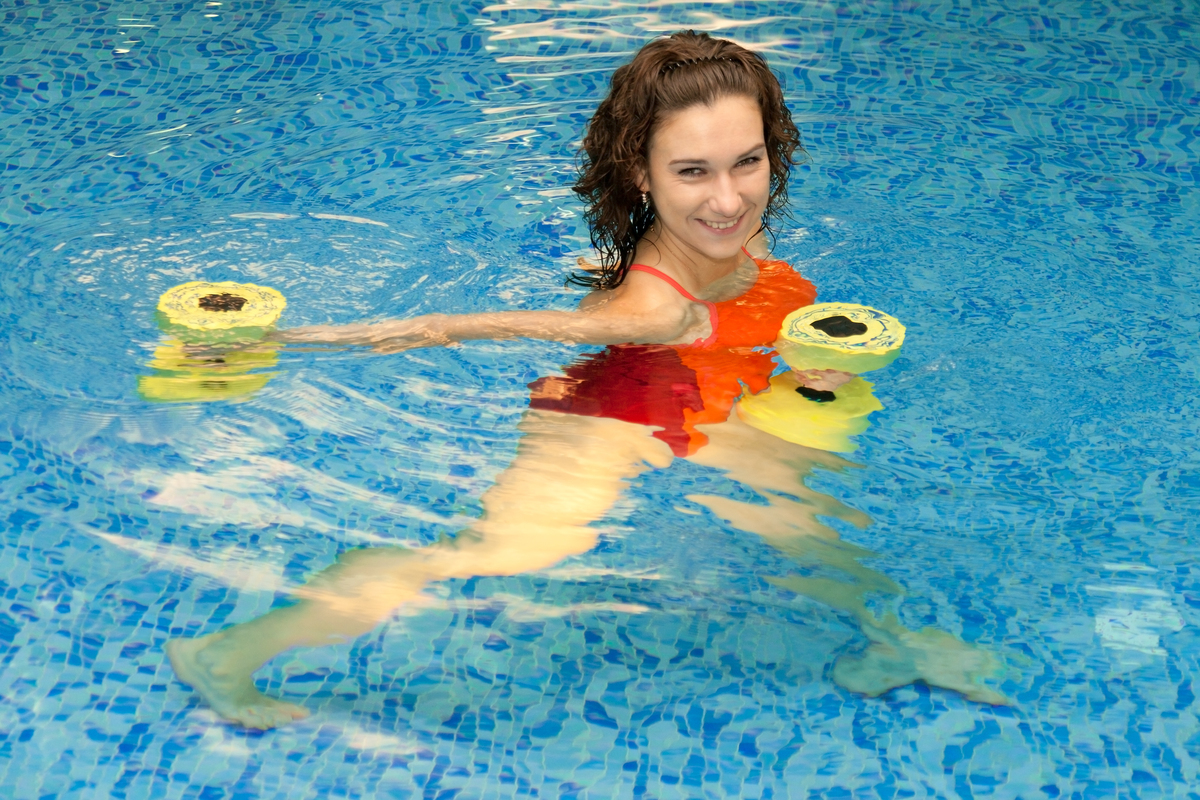
-
Whatever your favorite workout -- be it Zumba, spinning, yoga or jogging -- you can now probably do it in a pool near you. And it's not just for show. By getting your sweat on in the water, you eliminate the joint-jolting and tiring impact of many exercises while adding all-over resistance for greater strength and weight-loss gains, according to the Stockholm University College of Physical Education and Sports. Bonus: People who do pool exercises enjoy their workouts more than those who stick to dry land, per research from Baylor University Medical Center.
-
Best: Fun runsWhether it involves running through foam-covered obstacles or getting splattered with colored powder, fun runs have it right: Fun is the ultimate motivator, according to Edward L. Deci, Ph.D., a motivational researcher and professor of psychology at the University of Rochester. People who work out for the pure joy of working out rather than for a result (think: lose those last five pounds) actually stick with workouts longer and reap better results, he says. So grab your friends and sign up!
-
Best: Going vegan
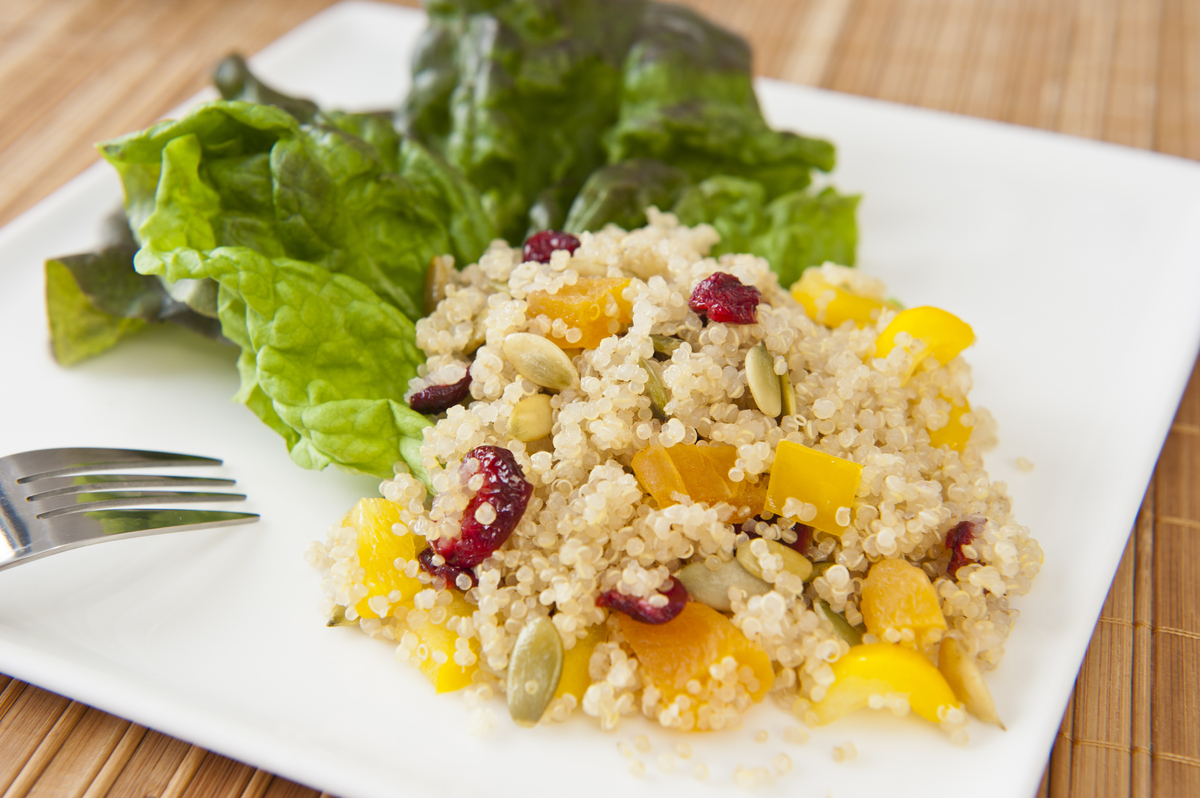 Somewhere between PETA's annual list of the sexiest vegan celebs and renowned food writer Mark Bittman's VB6: Eat Vegan Before 6:00 to Lose Weight and Restore Your Health... for Good, 2013 became the year of the vegan. Vegans tend to be thinner and have lower cholesterol and blood pressure than omnivores and vegetarians alike, according to a 2009 review in the American Journal of Clinical Nutrition. If you want to try an animal-product-free lifestyle -- even just part time -- make sure you get enough protein daily, advises Martica Heaner Ph.D., a nutritionist and exercise physiologist based in New York City.
Somewhere between PETA's annual list of the sexiest vegan celebs and renowned food writer Mark Bittman's VB6: Eat Vegan Before 6:00 to Lose Weight and Restore Your Health... for Good, 2013 became the year of the vegan. Vegans tend to be thinner and have lower cholesterol and blood pressure than omnivores and vegetarians alike, according to a 2009 review in the American Journal of Clinical Nutrition. If you want to try an animal-product-free lifestyle -- even just part time -- make sure you get enough protein daily, advises Martica Heaner Ph.D., a nutritionist and exercise physiologist based in New York City. -
Best: Hybrid yoga
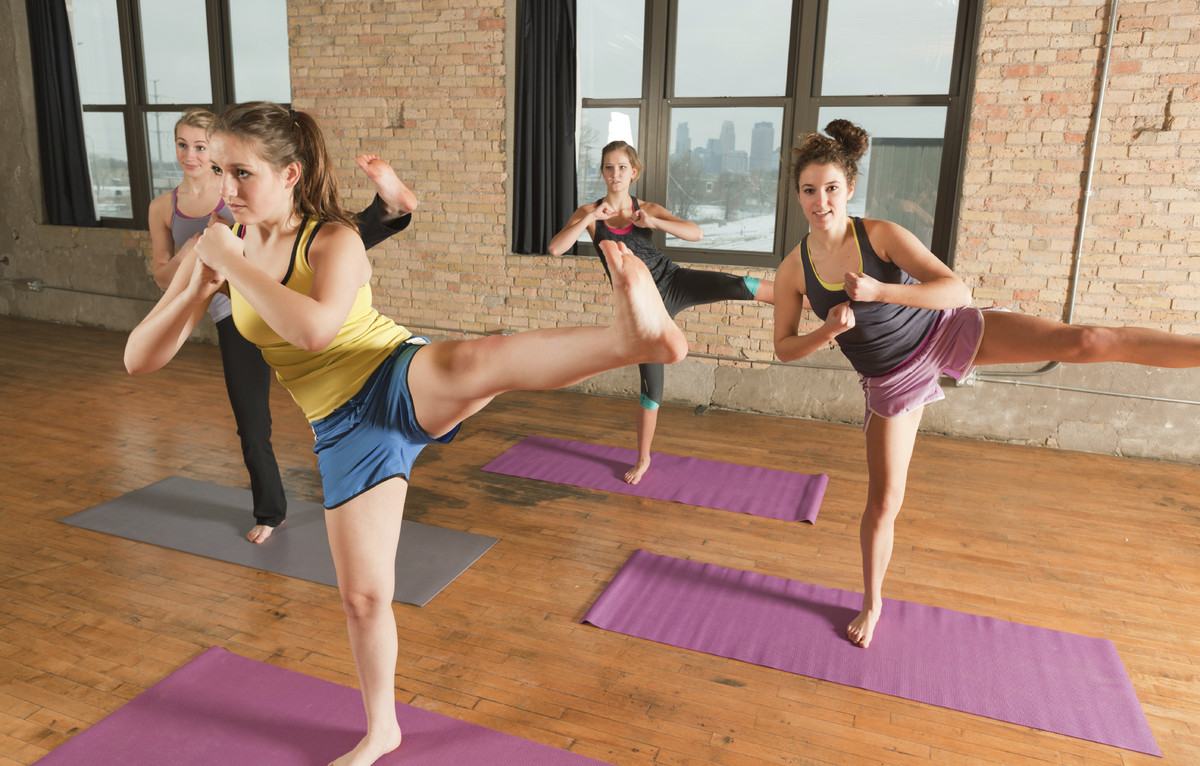 Ropes, hula-hoops, kickboxing moves and even trampolines made their way into the yoga studio this year -- and the combination caters to more than your attention span, says Melissa diLeonardo, an American Council on Exercise-certified personal trainer and a Life Fitness Master Trainer. By integrating non-yoga moves into your routine, you can train a wider variety of muscles for better total-body sculpting.
Ropes, hula-hoops, kickboxing moves and even trampolines made their way into the yoga studio this year -- and the combination caters to more than your attention span, says Melissa diLeonardo, an American Council on Exercise-certified personal trainer and a Life Fitness Master Trainer. By integrating non-yoga moves into your routine, you can train a wider variety of muscles for better total-body sculpting. -
Best: Bike-sharing programs
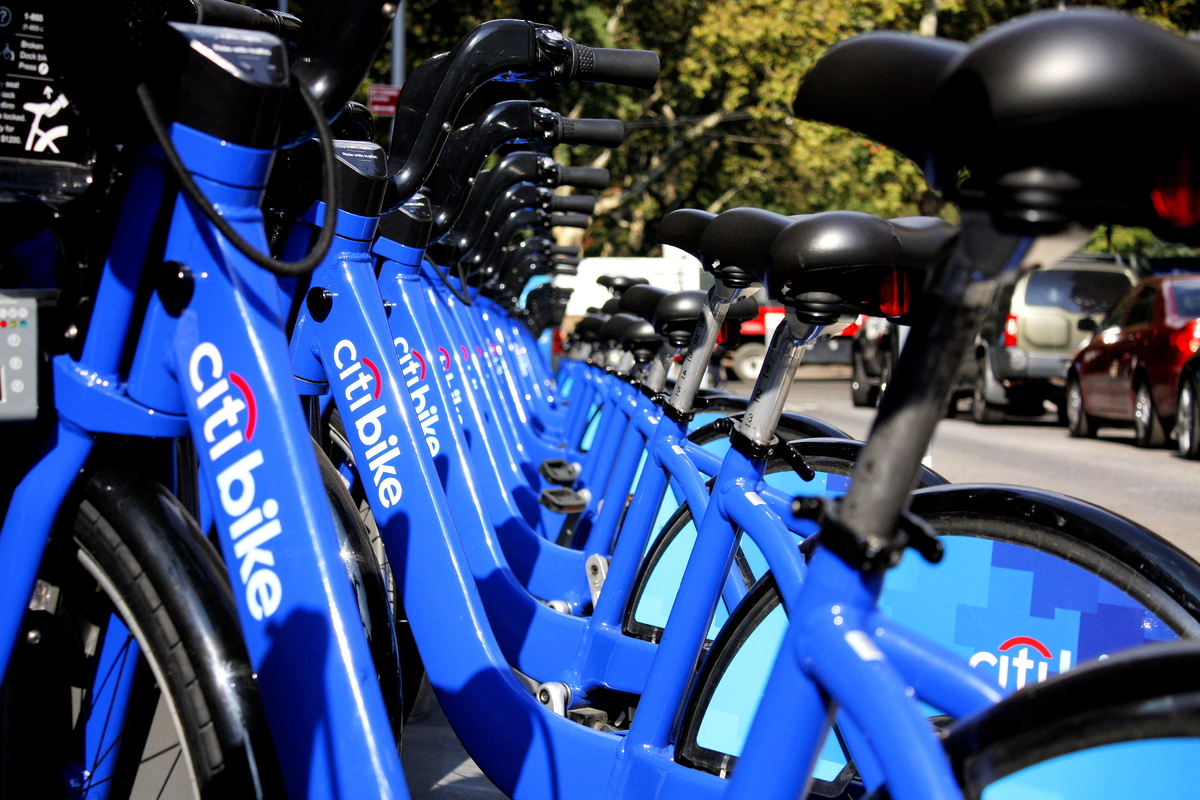 Now, in dozens of cities across the United States, exercise can actually save you time. So bypass traffic and get a bike pass: One four-year study of 822 adults found that bike commuters gain less weight over the years than car commuters. Besides toning your legs, increasing your heart rate, and strengthening your core, biking can seriously boost your energy. One study in Psychotherapy and Psychosomatics found that biking decreases fatigue by 65 percent.
Now, in dozens of cities across the United States, exercise can actually save you time. So bypass traffic and get a bike pass: One four-year study of 822 adults found that bike commuters gain less weight over the years than car commuters. Besides toning your legs, increasing your heart rate, and strengthening your core, biking can seriously boost your energy. One study in Psychotherapy and Psychosomatics found that biking decreases fatigue by 65 percent. -
Best: Playground workouts
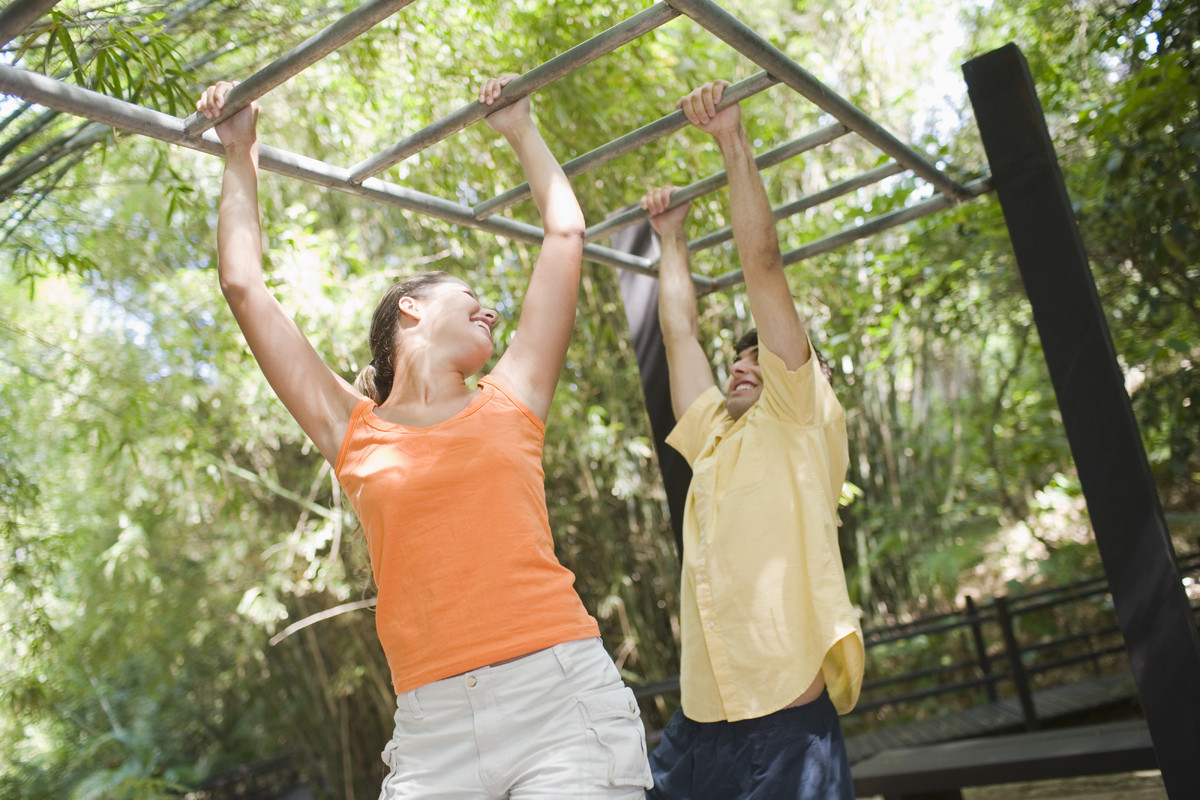 Girls (even grown ones) just want to have fun! And playground workouts -- from adult playground fitness parks across California to the jungle gym-inspired Synrgy360 stations in gyms -- are designed to help them have just that. "As adults, we just don't play enough. Play is good for your body and mind. These workouts give us an opportunity to let loose and explore new ways of burning calories while having fun," diLeonardo says. Plus, with bars for climbing, ropes for pulling, and platforms for jumping, playground workouts strengthen your entire body through natural, multi-joint exercises to improve your fitness both in and out of the gym.
Girls (even grown ones) just want to have fun! And playground workouts -- from adult playground fitness parks across California to the jungle gym-inspired Synrgy360 stations in gyms -- are designed to help them have just that. "As adults, we just don't play enough. Play is good for your body and mind. These workouts give us an opportunity to let loose and explore new ways of burning calories while having fun," diLeonardo says. Plus, with bars for climbing, ropes for pulling, and platforms for jumping, playground workouts strengthen your entire body through natural, multi-joint exercises to improve your fitness both in and out of the gym. -
Best: Exercise-specific footwearShoe fanatics, rejoice! Now stores stock Zumba, indoor cycling and even CrossFit shoes -- and they do more than make you look like a pro. "Footwear designed for specific activities can help improve performance and provide additional support when executing certain movement patterns," diLeonardo says. For example, shoes designed for dance-inspired classes generally have more lateral support and less tread so you don't twist your knee mid-spin. If you are starting a new class, talk to your instructor about the right footwear for the exercises involved.
-
Best: Intermittent fasting
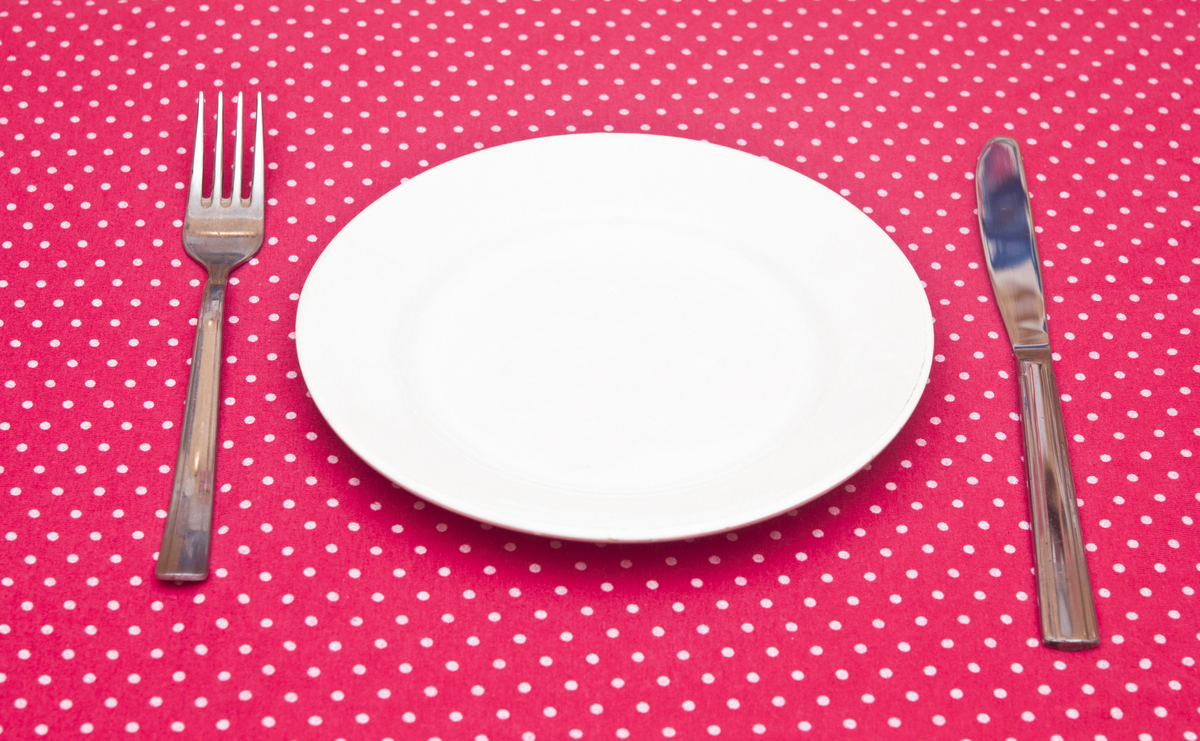 The Fast Diet, The IF Diet and The 5:2 Diet might sound like gimmicks, and they are definitely unintuitive, but a 2013 review in the British Journal of Diabetes and Vascular Disease suggests that fasting diets not only aid in weight loss but actually may help people with cardiovascular disease by decreasing inflammation, reducing blood pressure and improving blood sugar and triglyceride levels. The key is following a healthy protocol, as some can lead to a binge-purge mentality, says dietician Alexandra Caspero, RD, owner of weight-management and sports-nutrition service delicious-knowledge. She advises talking to a nutritionist or healthcare provider to find the one that's right for you.
The Fast Diet, The IF Diet and The 5:2 Diet might sound like gimmicks, and they are definitely unintuitive, but a 2013 review in the British Journal of Diabetes and Vascular Disease suggests that fasting diets not only aid in weight loss but actually may help people with cardiovascular disease by decreasing inflammation, reducing blood pressure and improving blood sugar and triglyceride levels. The key is following a healthy protocol, as some can lead to a binge-purge mentality, says dietician Alexandra Caspero, RD, owner of weight-management and sports-nutrition service delicious-knowledge. She advises talking to a nutritionist or healthcare provider to find the one that's right for you. -
Worst: Open-bar gyms
 Increasingly more gyms are serving their cool-down with a side of spirits: Finish a class and you get an all-you-can-drink pass. "Alcohol during or following an exercise class is a definite no in my book," says diLeonardo, who emphasizes the need to drink water, not alcohol. Why? According to one study in the Journal of Applied Physiology, alcohol drains your muscles' levels of glycogen, their primary source of fuel. The effect: Your muscles don't have the energy they need to repair, grow stronger and increase your metabolism. Basically, post-exercise sips negate your workout.
Increasingly more gyms are serving their cool-down with a side of spirits: Finish a class and you get an all-you-can-drink pass. "Alcohol during or following an exercise class is a definite no in my book," says diLeonardo, who emphasizes the need to drink water, not alcohol. Why? According to one study in the Journal of Applied Physiology, alcohol drains your muscles' levels of glycogen, their primary source of fuel. The effect: Your muscles don't have the energy they need to repair, grow stronger and increase your metabolism. Basically, post-exercise sips negate your workout. -
Worst: The Whole30 Diet
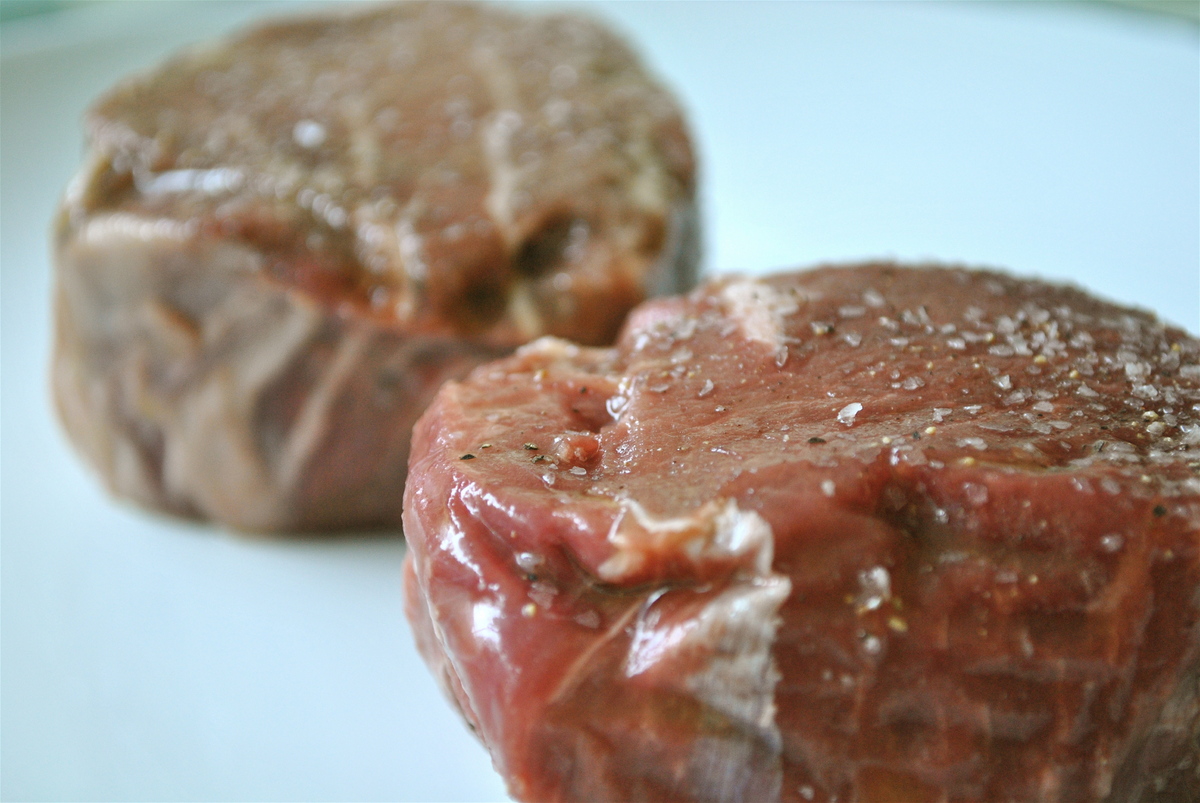 As if the Paleo Diet wasn't strict or unsustainable enough, this year people turned to the Whole30 Diet, which is basically an extremist "caveman" plan. The month-long program prohibits the consumption of fiber-filled legumes and whole grains, calcium- and vitamin D-rich dairy and even some Paleo-approved foods like coffee, alcohol and honey, all of which have been linked to improved health and longevity, Caspero says. While the strict plants-and-meat diet will surely spur weight loss by eliminating unhealthy refined sugars, the diet is far from sustainable -- and isn't designed to be that way. So what happens after the month ends? You yo-yo. And while weight lost from extremely restricted diets is typically from a combination of fat and lean tissues, weight regained is typically 100 percent fat, she says.
As if the Paleo Diet wasn't strict or unsustainable enough, this year people turned to the Whole30 Diet, which is basically an extremist "caveman" plan. The month-long program prohibits the consumption of fiber-filled legumes and whole grains, calcium- and vitamin D-rich dairy and even some Paleo-approved foods like coffee, alcohol and honey, all of which have been linked to improved health and longevity, Caspero says. While the strict plants-and-meat diet will surely spur weight loss by eliminating unhealthy refined sugars, the diet is far from sustainable -- and isn't designed to be that way. So what happens after the month ends? You yo-yo. And while weight lost from extremely restricted diets is typically from a combination of fat and lean tissues, weight regained is typically 100 percent fat, she says. -
Worst: Hot classes
 This year, hot Pilates, hot barre and even hot weightlifting classes have joined Bikram yoga in cranking up the heat. But for what? "You don't need the heat to get a good workout," says diLeonardo. One 2013 American Council on Exercise study found that increasing the temperature does not make you work any harder or burn any more calories. All of the sweat just makes you think you do, all while putting you at risk of dehydration, she says. Also, while the ACE study found that temperatures of up to 95 degrees are safe for a person with zero health issues, researchers warn that many classes turn up the temps as high as 115 degrees.
This year, hot Pilates, hot barre and even hot weightlifting classes have joined Bikram yoga in cranking up the heat. But for what? "You don't need the heat to get a good workout," says diLeonardo. One 2013 American Council on Exercise study found that increasing the temperature does not make you work any harder or burn any more calories. All of the sweat just makes you think you do, all while putting you at risk of dehydration, she says. Also, while the ACE study found that temperatures of up to 95 degrees are safe for a person with zero health issues, researchers warn that many classes turn up the temps as high as 115 degrees. -
Worst: Going gluten-free for no reason
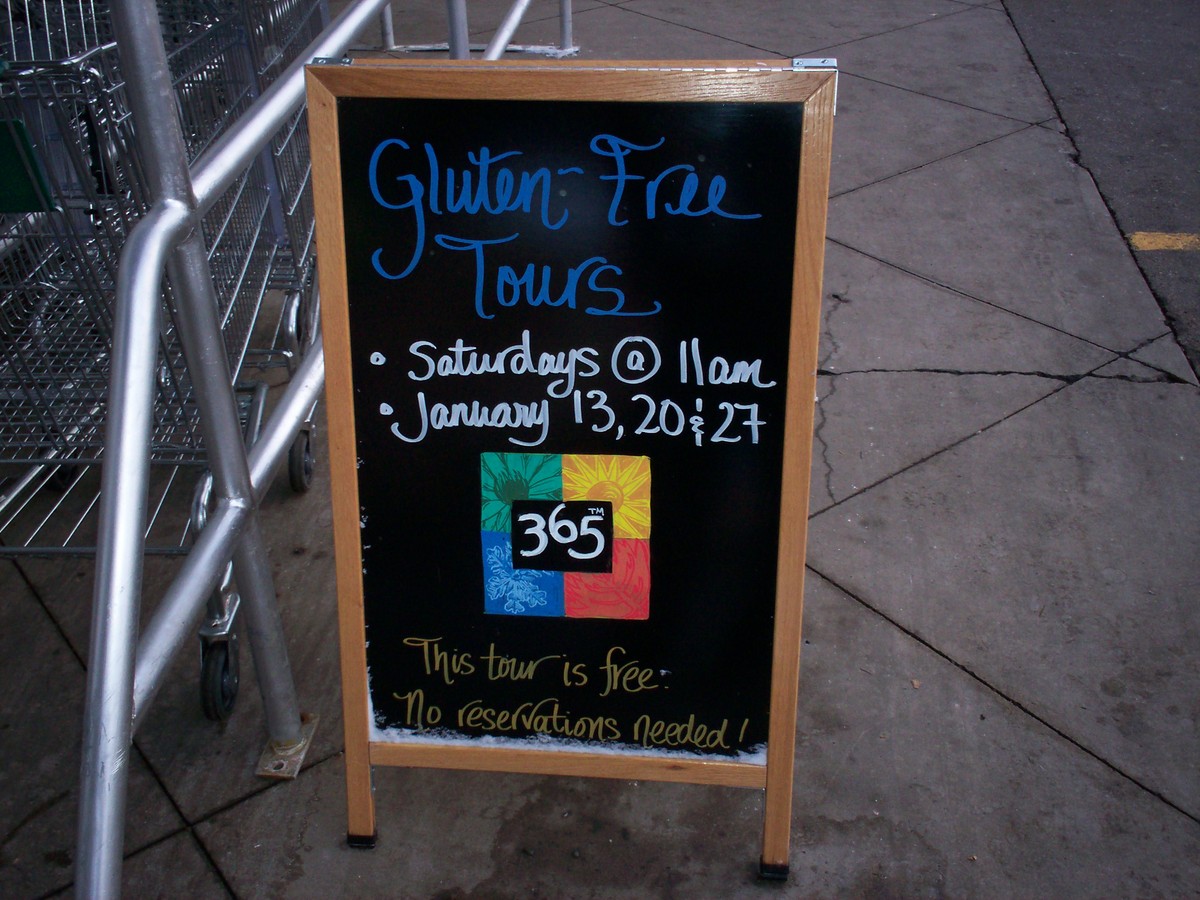 About one in three Americans are cutting down on or completely eliminating gluten, per a 2013 survey from The NPD Group. If you're one of them, read your nutrition labels. "Gluten-free foods aren't automatically better for you, and plenty of them can make you gain pounds" says Seattle-based certified nutritionist Deborah Enos. "Gluten helps to hold food together. When food manufacturers remove gluten, they add in fat and sugar to help the food maintain its shape." Plus, a 2012 review in the Journal of the Academy of Nutrition and Dietetics shows that a gluten-free diet has no benefit -- and can even harm gut health -- in people without celiac disease or a gluten intolerance.
About one in three Americans are cutting down on or completely eliminating gluten, per a 2013 survey from The NPD Group. If you're one of them, read your nutrition labels. "Gluten-free foods aren't automatically better for you, and plenty of them can make you gain pounds" says Seattle-based certified nutritionist Deborah Enos. "Gluten helps to hold food together. When food manufacturers remove gluten, they add in fat and sugar to help the food maintain its shape." Plus, a 2012 review in the Journal of the Academy of Nutrition and Dietetics shows that a gluten-free diet has no benefit -- and can even harm gut health -- in people without celiac disease or a gluten intolerance. -
Worst: Vibration machines
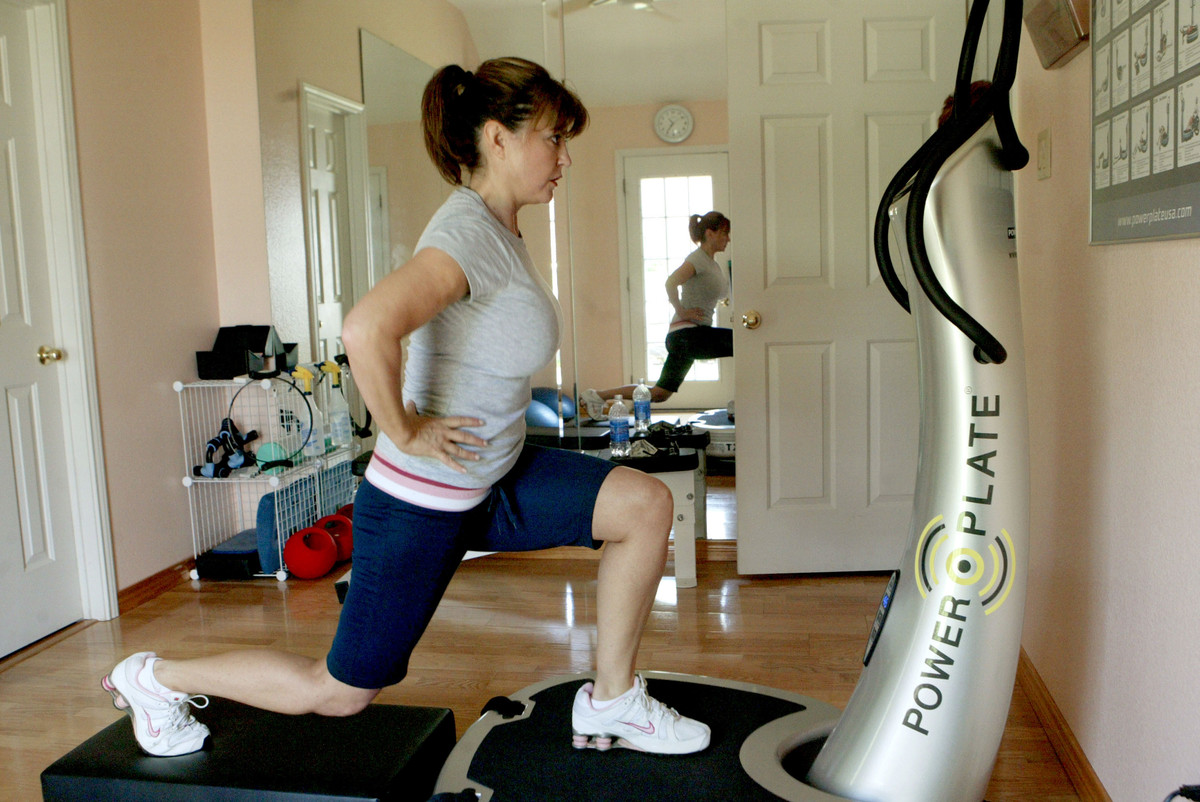 Remember watching your mom jiggle her fat away with vibrating belts? Well, the vibration fad is back, but this time you stand on a pulsating platform to tone muscles, boost your metabolism, and reduce cellulite... or not. In one International Journal of Sports Medicine study, women who completed 24 weeks of whole-body vibration training did not lose fat.
Remember watching your mom jiggle her fat away with vibrating belts? Well, the vibration fad is back, but this time you stand on a pulsating platform to tone muscles, boost your metabolism, and reduce cellulite... or not. In one International Journal of Sports Medicine study, women who completed 24 weeks of whole-body vibration training did not lose fat. -
Worst: Too-intense workouts
 Pushing yourself is great. But pushing yourself beyond your ability is counterproductive and dangerous. Unfortunately a slew of workout classes and DVDs tout exhaustion as the ultimate goal, sacrificing form for intensity and increasing your risk of injury, says performance enhancement specialist Martin Rooney. What's more, when working out at home to DVDs, it's challenging to know if you are keeping form even before fatigue sets in. Before signing up for any high-intensity interval classes (which we love!) or popping in a DVD, develop proper form with a personal or small-group trainer.
Pushing yourself is great. But pushing yourself beyond your ability is counterproductive and dangerous. Unfortunately a slew of workout classes and DVDs tout exhaustion as the ultimate goal, sacrificing form for intensity and increasing your risk of injury, says performance enhancement specialist Martin Rooney. What's more, when working out at home to DVDs, it's challenging to know if you are keeping form even before fatigue sets in. Before signing up for any high-intensity interval classes (which we love!) or popping in a DVD, develop proper form with a personal or small-group trainer. -
Worst: The Bulletproof Diet
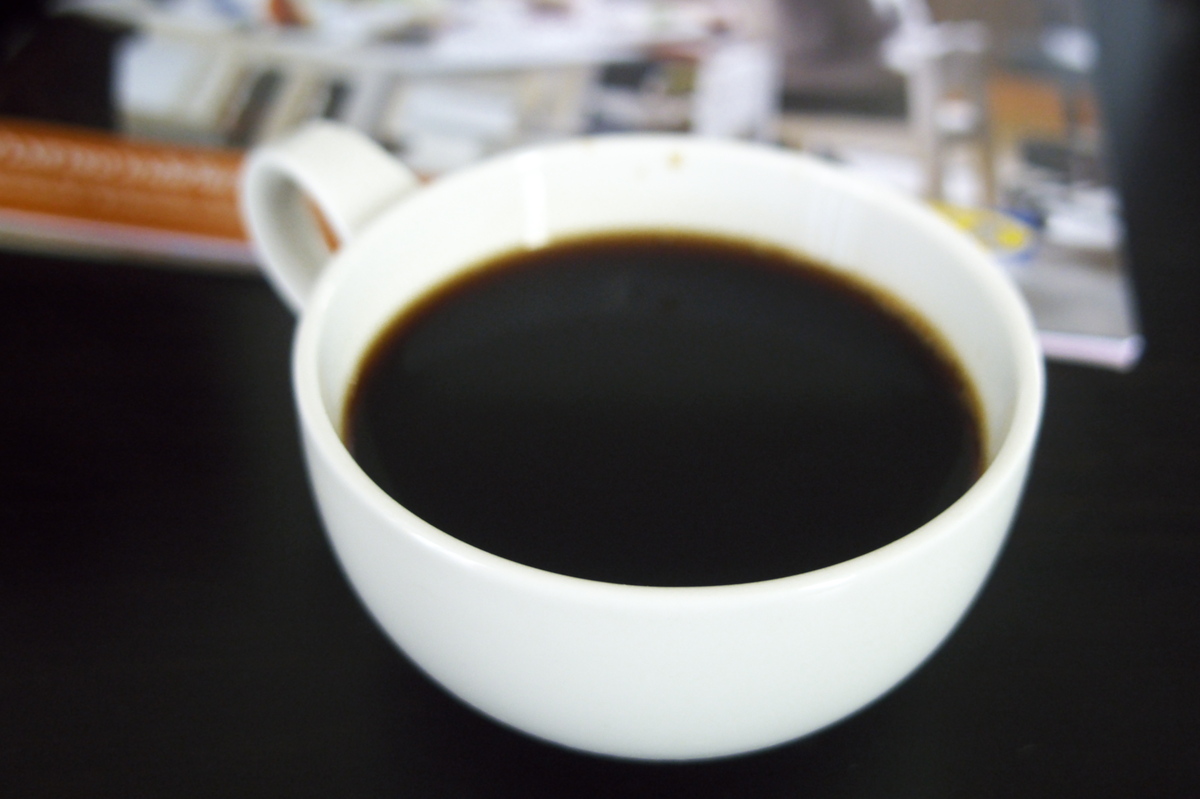 An example of why you should read into who's behind your eating plan, The Bulletproof Diet wasn't drafted by an M.D. or nutritionist. It was designed by a Silicon Valley investor and computer security professional who lost more than 100 pounds, according to the diet's website. While his personal weight loss is certainly inspiring, it doesn't provide rock-solid scientific evidence to support recommendations to eat 4,000-plus calories a day, not exercise and scoop butter into their morning coffee. If it sounds too good to be true, it probably is.
An example of why you should read into who's behind your eating plan, The Bulletproof Diet wasn't drafted by an M.D. or nutritionist. It was designed by a Silicon Valley investor and computer security professional who lost more than 100 pounds, according to the diet's website. While his personal weight loss is certainly inspiring, it doesn't provide rock-solid scientific evidence to support recommendations to eat 4,000-plus calories a day, not exercise and scoop butter into their morning coffee. If it sounds too good to be true, it probably is.
8 Photos That Prove Happiness Can Be Discovered In Unexpected Places
The stress and strain of constantly being connected can
sometimes take your life -- and your well-being -- off course. GPS For
The Soul can help you find your way back to balance.
GPS Guides are our way of showing you what has relieved others' stress in the hopes that you will be able to identify solutions that work for you. We all have de-stressing "secret weapons" that we pull out in times of tension or anxiety, whether they be photos that relax us or make us smile, songs that bring us back to our heart, quotes or poems that create a feeling of harmony, or meditative exercises that help us find a sense of silence and calm. We encourage you to look at the GPS Guide below, visit our other GPS Guides here, and share with us your own personal tips for finding peace, balance and tranquility.
Happiness can be found even in the smallest of places. Whether you're having the best or the worst day ever, more joy is just waiting to be discovered. Just looking on the bright side of life -- whether you feel like it or not -- can help you have a healthier heart, manage stress and live longer.
Next time you're feeling blue, remember that happiness really is unavoidable and may even be right within your reach. These eight photos prove it.
Joy can be found in the seat that grounds you...

In the food that nourishes you...

In "happy" accidents...

In your morning rituals...

During your mindful walks...

In your kitchen...

After a relaxing shower...

And finally, it can even be found in the sky (but only if you're looking up!)

GPS Guides are our way of showing you what has relieved others' stress in the hopes that you will be able to identify solutions that work for you. We all have de-stressing "secret weapons" that we pull out in times of tension or anxiety, whether they be photos that relax us or make us smile, songs that bring us back to our heart, quotes or poems that create a feeling of harmony, or meditative exercises that help us find a sense of silence and calm. We encourage you to look at the GPS Guide below, visit our other GPS Guides here, and share with us your own personal tips for finding peace, balance and tranquility.
Happiness can be found even in the smallest of places. Whether you're having the best or the worst day ever, more joy is just waiting to be discovered. Just looking on the bright side of life -- whether you feel like it or not -- can help you have a healthier heart, manage stress and live longer.
Next time you're feeling blue, remember that happiness really is unavoidable and may even be right within your reach. These eight photos prove it.
Joy can be found in the seat that grounds you...

In the food that nourishes you...

In "happy" accidents...

In your morning rituals...

During your mindful walks...

In your kitchen...

After a relaxing shower...

And finally, it can even be found in the sky (but only if you're looking up!)

How Technology Speeds Up Time (And How To Slow It Down Again)
It often feels as though time speeds up as we age, with each season
and year seemingly passing by more quickly than the last. And according
to some psychologists, in addition to aging, the way we interact with
technology could also have a profound effect on the way we experience
time.
Sitting in front of computers all day, we're constantly confronted by a clock telling us what time it is, and it's no different whether we're at home or on the go: 60 percent of Gen Yers (ages 18-30) find themselves compulsively or subconsciously checking their smart phones for emails, texts, or social media updates, according to a 2012 Cisco report.
This ever-present technology is changing not only the way we perceive time, but also the way we think, according to Dr. Philip Zimbardo, professor emeritus of psychology at Stanford and author of The Time Paradox: The New Psychology Of Time That Will Change Your Life.
"[Technology creates] a funny kind of obsession with time, but it's this very short-focused, immediate-present time," Zimbardo tells The Huffington Post.
The way we perceive and experience time can have a profound psychological effect. Far from being objective, time is, in fact, a highly subjective experience, one that's subject to technological and cultural influences. From an early age, our highly malleable time perceptions become biased. In The Time Paradox, Zimbardo argues that we all operate from one of three primary time biases. Those who tend to think of their current experiences in terms of what they've already experienced are past-oriented, those who focus on the immediate are present-oriented, and those who think in long-term projections are more future-oriented.
"Time has a powerful effect on our lives that we're unaware of," says Zimbardo. "I argue that it's the most powerful influence on everything we do. It's so powerful because we get programmed very early in life to be in one of these 'time zones.'"
The ideal balance, Zimbardo explains, is to be moderately future-oriented (enough to be motivated to work towards our goals but not so much as to breed workaholism), moderately past-positive (when we look back on our lives, we have a generally positive outlook), and moderately "present hedonistic," meaning that we take time out for friends, family and fun, but are not so pleasure-oriented as to have addictive tendencies.
But over-reliance on technology -- constantly checking email and social networks, and being distracted by alerts on our mobile devices -- can take us out of both the past and the future, and into a state of heightened "present hedonism" in which we're constantly focused (in a sometimes compulsive way) on what's either right in front of us or coming immediately afterwards.
"We're simply being in that moment to take the next action," says Zimbardo. "It's really minimizing the quality of life. It's minimizing the joy that we ought to be getting from everyday life."
Here are four things you should know about how technology affects your perception of time.
Being connected can speed up your sense of time.
Our constant access to virtually unlimited amounts of news and updates can create a need for immediacy that speeds up both our information intake and our perception of time.
"Our personal 'time zone' can be modified by technology, because it speeds up our internal clock," says Zimbardo. "Technology makes us impatient for anything that takes more than seconds to achieve. You press a button and you expect instant access ... so technology is pushing more and more of us into a very immediately-focused time zone. That means that we tend to ignore the future consequences of our behavior."
Because we're used to being constantly occupied, many of us have a hard time slowing down or waiting. A 2012 Pew survey found that among Millennials, hyper-connectivity can contribute to a need for instant gratification and a lack of patience.
It can trap us in the 'next' moment.
Technology can trap us in a cycle of instant gratification -- we're stuck in a present moment in which we are not fully present because we're also anticipating the next moment, Zimbardo explains.
Being plugged in keeps us focused on the next thing, looking at the future in a very short term sense of waiting for the next update. According to a 2011 Ipsos poll, 27 percent of teens use Facebook continuously throughout the day.
"They're constantly checking, hoping that something will be there," says Zimbardo. "Hope is a very future-oriented thing, but it's a very short term thing. 'I hope somebody will see the picture I posted, I hope somebody will respond.' So it's an intensive living in the present, and the future is very short-term. It's about the next hit."
This present-orientation can make us more susceptible to instant gratification.
We live in a world of temptation, says Zimbardo, and being future-oriented -- meaning that we act in the interest of our more long-term goals and values -- is what keeps us from giving in to our momentary desires.
In order to get to any long term goal you have to have plans, an agenda, a to-do list," says Zimbardo. "Future-oriented people are very good at getting these things done.
But when we become excessively present-orientated and focused on instant gratification, we're more susceptible to compulsive behavior.
"Present-oriented people are primed to be addicted to anything, because once they do it and it's good, they can't not do it again," says Zimbardo. "Video games or online activity becomes addictive when you would rather be doing that than anything else in the world. Eventually, it stops being a choice and it becomes an automatic behavior.
You can expand your present moment through mindfulness.
So what's Zimbardo's prescription for those stuck in a cycle of instant gratification? Take a time out.
"We have to take a time out from obsession with time," Zimbardo says. "Sometimes it's to do nothing -- to rest, take a walk, do some Zen breathing exercise."
Through mindfulness practices like meditation, we can bring ourselves into a truly present -- rather than divided and distracted -- present moment. And that can literally slow down time. A recent University of Kent study suggested that mindfulness meditation can actually alter time perception, creating a sense of time slowing down by shifting the brain's attentional resources.
"Zen has another kind of present orientation called the 'expanded present,'" Zimbardo says. "It's not present hedonism -- it's awareness of the self, and ultimately, losing the self."
Sitting in front of computers all day, we're constantly confronted by a clock telling us what time it is, and it's no different whether we're at home or on the go: 60 percent of Gen Yers (ages 18-30) find themselves compulsively or subconsciously checking their smart phones for emails, texts, or social media updates, according to a 2012 Cisco report.
This ever-present technology is changing not only the way we perceive time, but also the way we think, according to Dr. Philip Zimbardo, professor emeritus of psychology at Stanford and author of The Time Paradox: The New Psychology Of Time That Will Change Your Life.
"[Technology creates] a funny kind of obsession with time, but it's this very short-focused, immediate-present time," Zimbardo tells The Huffington Post.
The way we perceive and experience time can have a profound psychological effect. Far from being objective, time is, in fact, a highly subjective experience, one that's subject to technological and cultural influences. From an early age, our highly malleable time perceptions become biased. In The Time Paradox, Zimbardo argues that we all operate from one of three primary time biases. Those who tend to think of their current experiences in terms of what they've already experienced are past-oriented, those who focus on the immediate are present-oriented, and those who think in long-term projections are more future-oriented.
"Time has a powerful effect on our lives that we're unaware of," says Zimbardo. "I argue that it's the most powerful influence on everything we do. It's so powerful because we get programmed very early in life to be in one of these 'time zones.'"
The ideal balance, Zimbardo explains, is to be moderately future-oriented (enough to be motivated to work towards our goals but not so much as to breed workaholism), moderately past-positive (when we look back on our lives, we have a generally positive outlook), and moderately "present hedonistic," meaning that we take time out for friends, family and fun, but are not so pleasure-oriented as to have addictive tendencies.
But over-reliance on technology -- constantly checking email and social networks, and being distracted by alerts on our mobile devices -- can take us out of both the past and the future, and into a state of heightened "present hedonism" in which we're constantly focused (in a sometimes compulsive way) on what's either right in front of us or coming immediately afterwards.
"We're simply being in that moment to take the next action," says Zimbardo. "It's really minimizing the quality of life. It's minimizing the joy that we ought to be getting from everyday life."
Here are four things you should know about how technology affects your perception of time.
Being connected can speed up your sense of time.
Our constant access to virtually unlimited amounts of news and updates can create a need for immediacy that speeds up both our information intake and our perception of time.
"Our personal 'time zone' can be modified by technology, because it speeds up our internal clock," says Zimbardo. "Technology makes us impatient for anything that takes more than seconds to achieve. You press a button and you expect instant access ... so technology is pushing more and more of us into a very immediately-focused time zone. That means that we tend to ignore the future consequences of our behavior."
Because we're used to being constantly occupied, many of us have a hard time slowing down or waiting. A 2012 Pew survey found that among Millennials, hyper-connectivity can contribute to a need for instant gratification and a lack of patience.
It can trap us in the 'next' moment.
Technology can trap us in a cycle of instant gratification -- we're stuck in a present moment in which we are not fully present because we're also anticipating the next moment, Zimbardo explains.
Being plugged in keeps us focused on the next thing, looking at the future in a very short term sense of waiting for the next update. According to a 2011 Ipsos poll, 27 percent of teens use Facebook continuously throughout the day.
"They're constantly checking, hoping that something will be there," says Zimbardo. "Hope is a very future-oriented thing, but it's a very short term thing. 'I hope somebody will see the picture I posted, I hope somebody will respond.' So it's an intensive living in the present, and the future is very short-term. It's about the next hit."
This present-orientation can make us more susceptible to instant gratification.
We live in a world of temptation, says Zimbardo, and being future-oriented -- meaning that we act in the interest of our more long-term goals and values -- is what keeps us from giving in to our momentary desires.
In order to get to any long term goal you have to have plans, an agenda, a to-do list," says Zimbardo. "Future-oriented people are very good at getting these things done.
But when we become excessively present-orientated and focused on instant gratification, we're more susceptible to compulsive behavior.
"Present-oriented people are primed to be addicted to anything, because once they do it and it's good, they can't not do it again," says Zimbardo. "Video games or online activity becomes addictive when you would rather be doing that than anything else in the world. Eventually, it stops being a choice and it becomes an automatic behavior.
You can expand your present moment through mindfulness.
So what's Zimbardo's prescription for those stuck in a cycle of instant gratification? Take a time out.
"We have to take a time out from obsession with time," Zimbardo says. "Sometimes it's to do nothing -- to rest, take a walk, do some Zen breathing exercise."
Through mindfulness practices like meditation, we can bring ourselves into a truly present -- rather than divided and distracted -- present moment. And that can literally slow down time. A recent University of Kent study suggested that mindfulness meditation can actually alter time perception, creating a sense of time slowing down by shifting the brain's attentional resources.
"Zen has another kind of present orientation called the 'expanded present,'" Zimbardo says. "It's not present hedonism -- it's awareness of the self, and ultimately, losing the self."
Sleep Deprivation: Here's What Can Happen
According to the National Sleep Foundation, adults should get between seven and nine hours of shut-eye per night, with that number going up or down depending on age.
The foundation cites an increased risk of accident and injury as a main result of sleep deprivation, and investigation of the recent train derailment shows that the engineer may have fallen asleep just before the crash. Lack of sleep has been linked with some of the world's great tragedies, including Chernobyl, the Challenger explosion and Three Mile Island.
In 2011, the Centers for Disease Control (CDC) found that more than 70 million adults suffer from some form of sleep disorder, including insomnia, narcolepsy, sleep apnea and restless leg syndrome. In that same article, the CDC refers to sleep deprivation as a "public health epidemic," and I completely agree. Sleep affects every system in the body, and each one must function efficiently in order to achieve optimum health. In fact, I alluded to sleep in my recent blog, "Are You Healed or Whole?"
Here are just four things that can happen to you without sleep:
You might become depressed. This relationship is complex, because sleep deprivation can be both a cause and result of depression. Research suggests, however, that the risk of developing depression is highest among people with sleep disorders.
You could experience sleep paralysis. It's pretty common, usually infrequent and often temporary -- but please don't, for one minute, dismiss the potential harm of sleep paralysis. Often described as a" walking nightmare," it is caused by the disruption of rapid eye movement (REM) sleep which, in turn, is caused by insomnia, stress and anxiety.
Here is one case where it could have been fatal: One of my friends, who experienced intense stress for days before the incident, couldn't sleep one night so he was up reading and watching DVDs until about 4 a.m. He had to rise again at 7:30 a.m. to drive his son somewhere and, on the way home, completely lost all memory and consciousness and woke up to find his car on a guardrail; if the guardrail hadn't stopped him, his car could have flipped over and fallen down a ravine. Luckily, he walked away without a scratch, but the car was completely destroyed. "The strange thing is I had to make at least two turns to get to the (accident) spot, but I just don't remember a thing," he told me.
You might gain weight Sleep is directly related to three hormones that control hunger. The first is cortisol, that "fight or flight" hormone that can also make us look puffy, interfere with glucose levels, act foggy and moody, and spread those waistlines. The second and third includes the hormones ghrelin and leptin. But, seriously, also ask yourself if you'll really feel like exercising when you're so tired -- and we don't exactly make the best food choices when we're exhausted.
You'll lower your immunity. JAMA Internal Medicine reports a study with 300 people given the rhino (cold) virus; it was found that those who got less than 7.5 hours of sleep were much more susceptible to catching something.
The foundation cites an increased risk of accident and injury as a main result of sleep deprivation, and investigation of the recent train derailment shows that the engineer may have fallen asleep just before the crash. Lack of sleep has been linked with some of the world's great tragedies, including Chernobyl, the Challenger explosion and Three Mile Island.
In 2011, the Centers for Disease Control (CDC) found that more than 70 million adults suffer from some form of sleep disorder, including insomnia, narcolepsy, sleep apnea and restless leg syndrome. In that same article, the CDC refers to sleep deprivation as a "public health epidemic," and I completely agree. Sleep affects every system in the body, and each one must function efficiently in order to achieve optimum health. In fact, I alluded to sleep in my recent blog, "Are You Healed or Whole?"
Here are just four things that can happen to you without sleep:
You might become depressed. This relationship is complex, because sleep deprivation can be both a cause and result of depression. Research suggests, however, that the risk of developing depression is highest among people with sleep disorders.
You could experience sleep paralysis. It's pretty common, usually infrequent and often temporary -- but please don't, for one minute, dismiss the potential harm of sleep paralysis. Often described as a" walking nightmare," it is caused by the disruption of rapid eye movement (REM) sleep which, in turn, is caused by insomnia, stress and anxiety.
Here is one case where it could have been fatal: One of my friends, who experienced intense stress for days before the incident, couldn't sleep one night so he was up reading and watching DVDs until about 4 a.m. He had to rise again at 7:30 a.m. to drive his son somewhere and, on the way home, completely lost all memory and consciousness and woke up to find his car on a guardrail; if the guardrail hadn't stopped him, his car could have flipped over and fallen down a ravine. Luckily, he walked away without a scratch, but the car was completely destroyed. "The strange thing is I had to make at least two turns to get to the (accident) spot, but I just don't remember a thing," he told me.
You might gain weight Sleep is directly related to three hormones that control hunger. The first is cortisol, that "fight or flight" hormone that can also make us look puffy, interfere with glucose levels, act foggy and moody, and spread those waistlines. The second and third includes the hormones ghrelin and leptin. But, seriously, also ask yourself if you'll really feel like exercising when you're so tired -- and we don't exactly make the best food choices when we're exhausted.
You'll lower your immunity. JAMA Internal Medicine reports a study with 300 people given the rhino (cold) virus; it was found that those who got less than 7.5 hours of sleep were much more susceptible to catching something.
How To Exercise In Cold Weather
By Laura McMullen for U.S. News
Nose dripping. Eyes watering. Cold air freezing your throat, filling your lungs and drifting from your mouth in the form of an exhausted little cloud. Exercise outside in the wintertime, and you’ll enjoy these sensations. Consider them points of pride for braving the cold as most others pack into stuffy gyms.
Suspicious of anyone who'd voluntarily go outside -- let alone exercise! -- in 30-degree weather? You'll probably warm up to the idea if you go about cold-weather exercise the right way and let your body adjust to the low temperatures. Follow these tips from John Honerkamp, chief coach of the New York Road Runners organization, and the Mayo Clinic, for safely (and even enjoyably) working out in the winter.
Acclimate. That first workout in the winter air might have seemed like a cruel joke -- with your legs feeling stuck in the mud and the cold air icing your lungs and throat. But chin up: Although it may be hard to believe now, your body will get used to the cold weather. In order for your body to adjust, however, you'll have to continue braving the outdoors for your workouts.
When you first start exercising in frigid temperatures, curb your expectations. You probably won't reach your personal records because your body isn't as naturally warmed up as it was in June, and because it's yet to acclimate. Throw in wind or snow, and your results are even more likely to be affected. "It's key to focus on effort versus actual pace," Honerkamp says.
It may take longer for your body to reach your typical speed, so leave more time to warm up. And tweak your workouts to be a little lighter at first, to help your body adjust. "Baby step it, and let your body get used to running in the cold just like it needs to acclimate to heat," Honerkamp says. After a few weeks of consistent outdoor workouts, your body will likely adapt. And in a few months, these 35-degree workouts will seem like dream as you lace up for a 10-degree run.
Find a buddy. Now that you know you must resign to a few uncomfortable outdoor workouts before your body adjusts, you may want to find someone to hold you accountable for getting out there. "The toughest part is sometimes just lacing up the shoes and getting out the door," Honerkamp says. "And that's even tougher if it's snowing or 10 degrees versus a nicer day." Find a running group, coach or friend who will count on you to brave the elements with them.
Hydrate. Even if it's not as obvious as in the summer, you're still sweating during cold-weather workouts and pushing yourself, so stay hydrated.
Dress the part. Honerkamp describes running in frigid temperatures as a "badge of courage" for tough athletes who aren't scared of the elements. But, he says, "if you're going to be tough, make sure you're smart about it and that you're dressed appropriately."
Honerkamp suggests wearing layers, which help manage the combination of cold air, body heat and sweat. Remove a layer when you start to perspire; put it back on when you're cold again. Mayo Clinic specifies what materials your layers should (and shouldn't) be, and in which order to wear them on its website. The clinic also stresses the importance of covering your hands, feet and ears, as these parts are particularly vulnerable to frostbite.
Be sure to sport your sunscreen, because, yes, the sun still shines in the winter. Honerkamp points out that the rays can be intense as they reflect off fresh snow. And if you're running in the dark, wear bright, reflective outer layers so drivers, bikers and other runners can see you.
Change after your run. Whatever you wear, change out of your clothes soon after you complete your workout. You're more likely to get sick if you're sitting around in cold clothes, especially if they're wet from sweat, rain or snow, Honerkamp says. Even if you don't take a shower, changing into dry clothes will help.
Know when to take it inside. There is a point when layers and acclimation only go so far -- when uncomfortable weather becomes unsafe. Check the weather conditions before your run. If the wind chill is extreme or the temperature is well below zero, Mayo Clinic suggests skipping your workout or taking it inside. Even if you're not interested in the gym, there are plenty of exercises you can do anywhere, including indoors. Honerkamp also suggests runners be conscious of footing conditions, like ice.
"I'll run in 10 degrees," he says, "but I usually go to the treadmill when it's icy."
Nose dripping. Eyes watering. Cold air freezing your throat, filling your lungs and drifting from your mouth in the form of an exhausted little cloud. Exercise outside in the wintertime, and you’ll enjoy these sensations. Consider them points of pride for braving the cold as most others pack into stuffy gyms.
Suspicious of anyone who'd voluntarily go outside -- let alone exercise! -- in 30-degree weather? You'll probably warm up to the idea if you go about cold-weather exercise the right way and let your body adjust to the low temperatures. Follow these tips from John Honerkamp, chief coach of the New York Road Runners organization, and the Mayo Clinic, for safely (and even enjoyably) working out in the winter.
Acclimate. That first workout in the winter air might have seemed like a cruel joke -- with your legs feeling stuck in the mud and the cold air icing your lungs and throat. But chin up: Although it may be hard to believe now, your body will get used to the cold weather. In order for your body to adjust, however, you'll have to continue braving the outdoors for your workouts.
When you first start exercising in frigid temperatures, curb your expectations. You probably won't reach your personal records because your body isn't as naturally warmed up as it was in June, and because it's yet to acclimate. Throw in wind or snow, and your results are even more likely to be affected. "It's key to focus on effort versus actual pace," Honerkamp says.
It may take longer for your body to reach your typical speed, so leave more time to warm up. And tweak your workouts to be a little lighter at first, to help your body adjust. "Baby step it, and let your body get used to running in the cold just like it needs to acclimate to heat," Honerkamp says. After a few weeks of consistent outdoor workouts, your body will likely adapt. And in a few months, these 35-degree workouts will seem like dream as you lace up for a 10-degree run.
Find a buddy. Now that you know you must resign to a few uncomfortable outdoor workouts before your body adjusts, you may want to find someone to hold you accountable for getting out there. "The toughest part is sometimes just lacing up the shoes and getting out the door," Honerkamp says. "And that's even tougher if it's snowing or 10 degrees versus a nicer day." Find a running group, coach or friend who will count on you to brave the elements with them.
Hydrate. Even if it's not as obvious as in the summer, you're still sweating during cold-weather workouts and pushing yourself, so stay hydrated.
Dress the part. Honerkamp describes running in frigid temperatures as a "badge of courage" for tough athletes who aren't scared of the elements. But, he says, "if you're going to be tough, make sure you're smart about it and that you're dressed appropriately."
Honerkamp suggests wearing layers, which help manage the combination of cold air, body heat and sweat. Remove a layer when you start to perspire; put it back on when you're cold again. Mayo Clinic specifies what materials your layers should (and shouldn't) be, and in which order to wear them on its website. The clinic also stresses the importance of covering your hands, feet and ears, as these parts are particularly vulnerable to frostbite.
Be sure to sport your sunscreen, because, yes, the sun still shines in the winter. Honerkamp points out that the rays can be intense as they reflect off fresh snow. And if you're running in the dark, wear bright, reflective outer layers so drivers, bikers and other runners can see you.
Change after your run. Whatever you wear, change out of your clothes soon after you complete your workout. You're more likely to get sick if you're sitting around in cold clothes, especially if they're wet from sweat, rain or snow, Honerkamp says. Even if you don't take a shower, changing into dry clothes will help.
Know when to take it inside. There is a point when layers and acclimation only go so far -- when uncomfortable weather becomes unsafe. Check the weather conditions before your run. If the wind chill is extreme or the temperature is well below zero, Mayo Clinic suggests skipping your workout or taking it inside. Even if you're not interested in the gym, there are plenty of exercises you can do anywhere, including indoors. Honerkamp also suggests runners be conscious of footing conditions, like ice.
"I'll run in 10 degrees," he says, "but I usually go to the treadmill when it's icy."
4 Habits of Superbly Confident People

Having confidence, to me, is this awesome feeling that feels like you are walking on steady and solid ground, 10 feet tall.
Wanted to share with you some of my thoughts of how to have that feeling.
One of my favorite movie scenes is from the movie Chariots of Fire, where the runner Eric Liddell is running in a race by the ocean. As the wonderful music of Vangelis plays, he asks himself, "Where does the power come from, to see the race to its end?" He then hears his inner voice respond, "The power comes from within." (If you haven't seen the movie, give yourself an inspiring treat and watch it!)
When you are feeling confident, it's like having that inner power propel you forward, and all parts of yourself are conspiring in your favor, cheering you on. It feels like an inner dance that has nothing to do with the externals and how we are doing with our outer achievements. (Interesting that the word confidence at the end sounds like dance!) You just feel good about yourself. That power is in the core of our beings. It holds us, walks us, breathes us, and when you find that core, you also find the confidence to do things that you never thought possible.
Rumi said it best: Life is rigged in your favor! And having that belief makes you feel confident to take action, without second-guessing or doubting yourself.
I want to share with you a specific moment in my life when my confidence was shaken, and how I regained it. It was during the time I was writing my first book, Conversations With the Goddesses. I was feeling terribly insecure and doubtful about my ability to write or think that I had anything to say.
In the middle of this uncertainty, quite unexpectedly, a friend from out of town came to stay with me for the weekend while she attended a neuroscience seminar in the city. She was rather unusual in the way asserted her authority, and had a sixth sense about things.
The night my friend arrived, I shared the doubts and difficulties of my writing with her, and to my surprise, I found that she was listening to me without offering any advice. I was a bit surprised when she knocked on my bedroom door the next morning, while it was still barely light outside, asking me to wake up.
She urgently said, I have an insight about your book and it can't wait.
She said to me, you have everything you need to write this book. But you lack one thing: confidence. And the reason you lack confidence is that you think you are going to do it on your own. You are forgetting that you have inner support, inner allies, inner knowledge that comes from something beyond you. You are not alone. You already have the information in you and you need to trust it. If you are open to receiving this assistance, all sorts of support will come your way and you are going to write a wonderful book.
I wrote everything she said down in red marker, every word. It was a catalytic moment, and I felt so alive that to this day I have saved that paper as a reminder that confidence and strength come from the knowledge that we are never alone. It comes from that power within. She was absolutely right. Once I opened up to that knowledge, my creativity was unleashed and I was able to complete my first book.
How do we find that power within? That is the question and the inner work that each one of us has to do -- to go inside and get a hold of our core. We all struggle with the issue of confidence. It leaves us when things don't go our way. Like a negative current that tries to consume us and spiral us downward, before you know it you can sink into the quicksand. Reconnecting with that wiser part of us -- that knows our value beyond our achievements or outer recognition, and has a larger perspective -- is the winning strategy that changes the negative current that comes against us, and transforms it into a positive wave that pushes us forward to our next committed action.
Our negative voices, which play in our head, say to us that we are not good enough.
They lie to us, making us feel that we are less than others and deplete us from the most valuable commodity a human being can have, trusting oneself and one's inner wisdom. The antidote is radical self-acceptance. I don't know if you know the character that Al Franken played in a television series called Stuart Smalley, but he famously said "I am good enough, I am smart enough, and doggone it, people like me." It is a good mantra for all of us to run inside our heads.
I have learned from my mother, who had unshakable inner trust in life, that the ability to create the life you want is not based on resumes and degrees, but on giving yourself permission to be who you are; accepting yourself the way you are; trying new things; not being afraid to fail; and using this world as your playground, knowing that you are writing the script as you go along. But often in our minds and creative imaginations, we start to write scripts that have negative outcomes that undermine us. Our critical voice stops us from attempting something new and following the spark of a new idea. I think Shakespeare said it best, "Our doubts are traitors, and make us lose the good we oft might win, by fearing to attempt."
There are four principles I have discovered that help me get back to my confidence when it falters.
1. Affirm that you are not alone. What that means, is that we often abandon ourselves, and that creates a feeling of tremendous insecurity. You are the one who has got to have your back and heart. There are three factors to knowing you are not alone: you reach within and you grab hold of your core self; you reach outward and you ask for help; and you reach to others and offer help.
2. Move into radical self-acceptance. Start appreciating every little thing about you, reinforce the positive, and refrain from focusing on lack. When you are feeling insecure, tell yourself, "I can't afford the luxury of indulging in my own insecurities." I often play the Bruno Mars song "Just the Way You Are," which energizes me (and I wonder if Bruno wrote it for me).
3. Don't wait to be perfect before you take action. You are always going to be a work in progress. Don't wait for perfect circumstances. We put conditions on our happiness and well-being that distract us from being open to the opportunities that are in front of us.
4. Your presence is required. Call your heart energy present as you are living your daily life. Bring it present in your conversations and all your interactions. Do not disconnect from your heart. It is what brings fulfillment in your day.
Let's get into that sweet spot of really accepting and cherishing our vulnerabilities, our humanness and ourselves! Let's embrace the whole package, the things we are good at and the things we are not so good at, because that is how we find our confidence and how we make the ground we walk on not only steady, but sacred.
Will you share with us how you find your confidence and what tools you use? Tell us in the comments below.
Subscribe to:
Comments (Atom)

